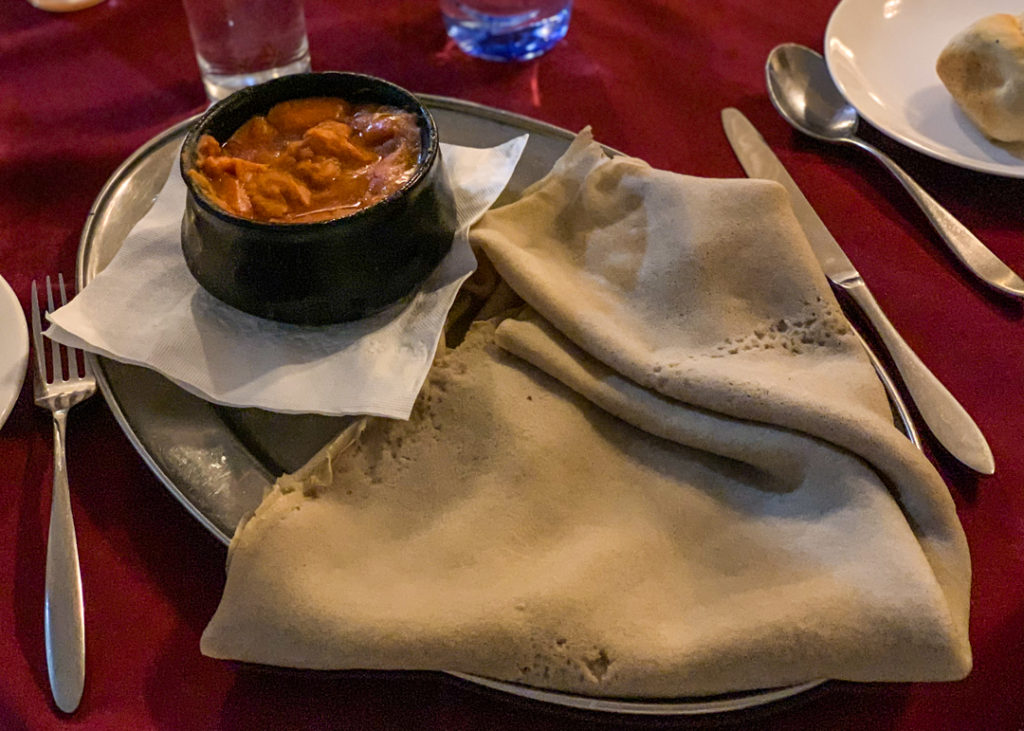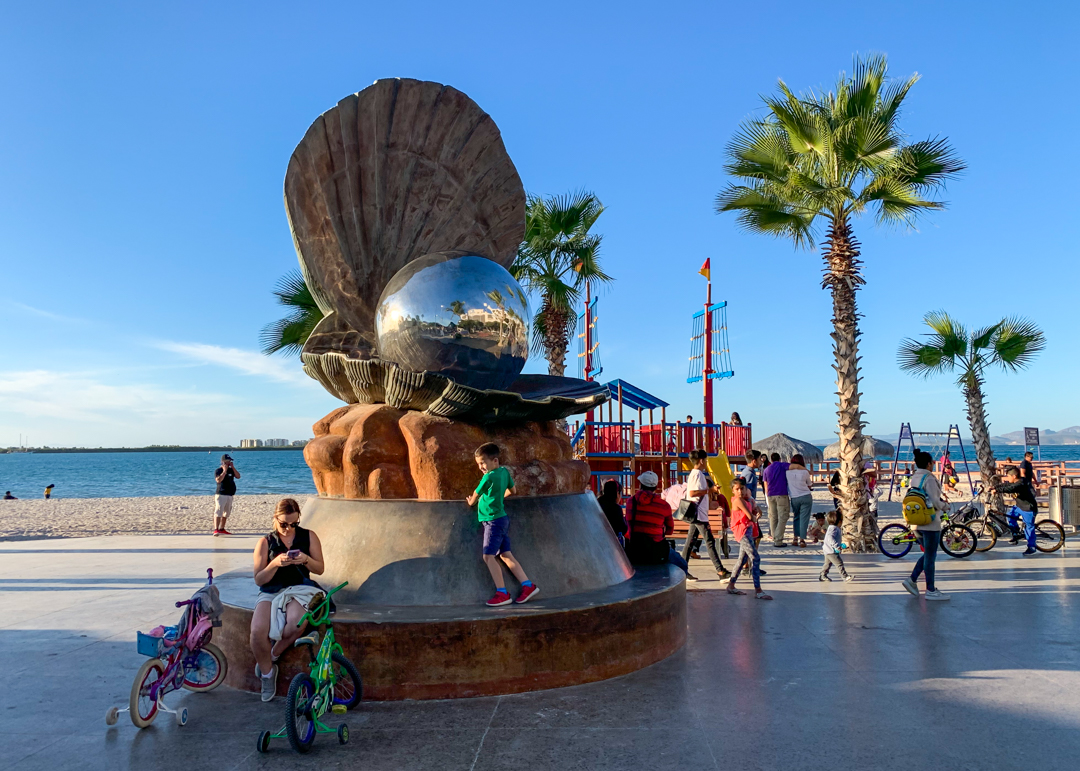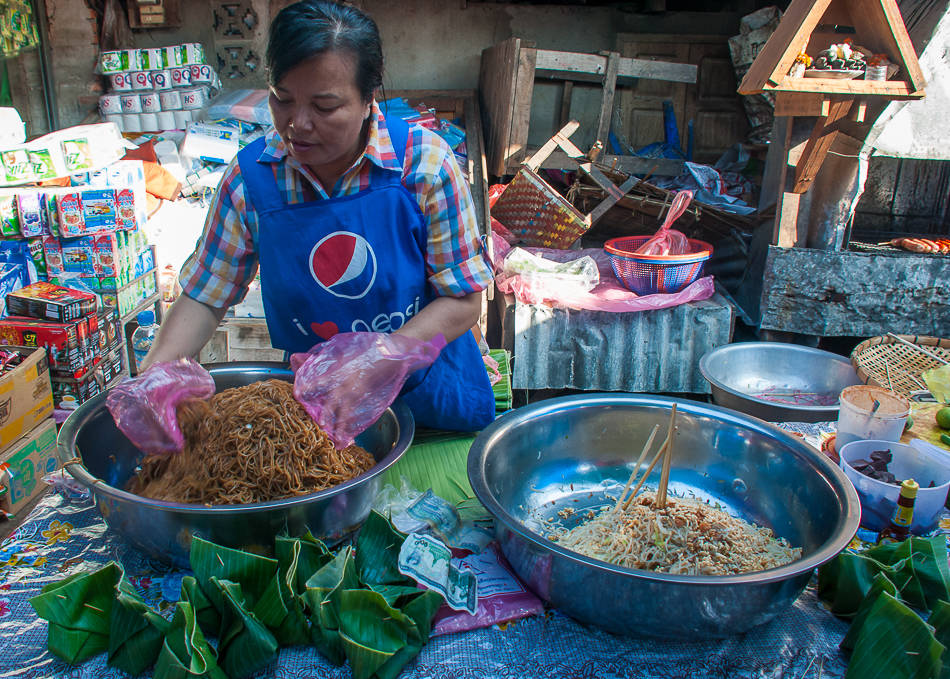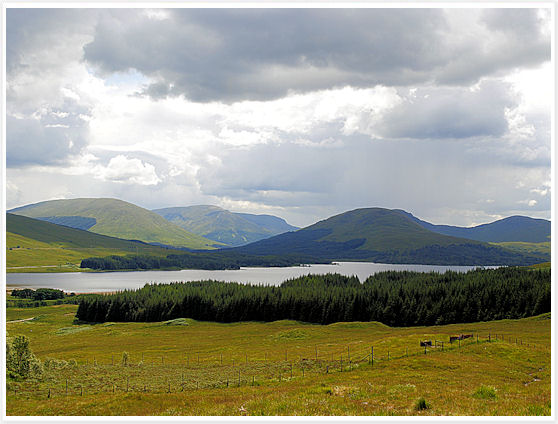It was fitting that we would start our historical tour of northern Ethiopia in Aksum (also called Axum) which is considered the cradle of Ethiopian civilization. The World Heritage Site sits on thousands of years of mysteries, legends and ancient biblical culture and is considered one of Ethiopia’s holiest cities. Landing at the modern airport after a short flight from Addis Ababa is a stark contrast to the archaeological relics it is known for, and a sure indication the old stories are starting to attract the believers and skeptics alike.
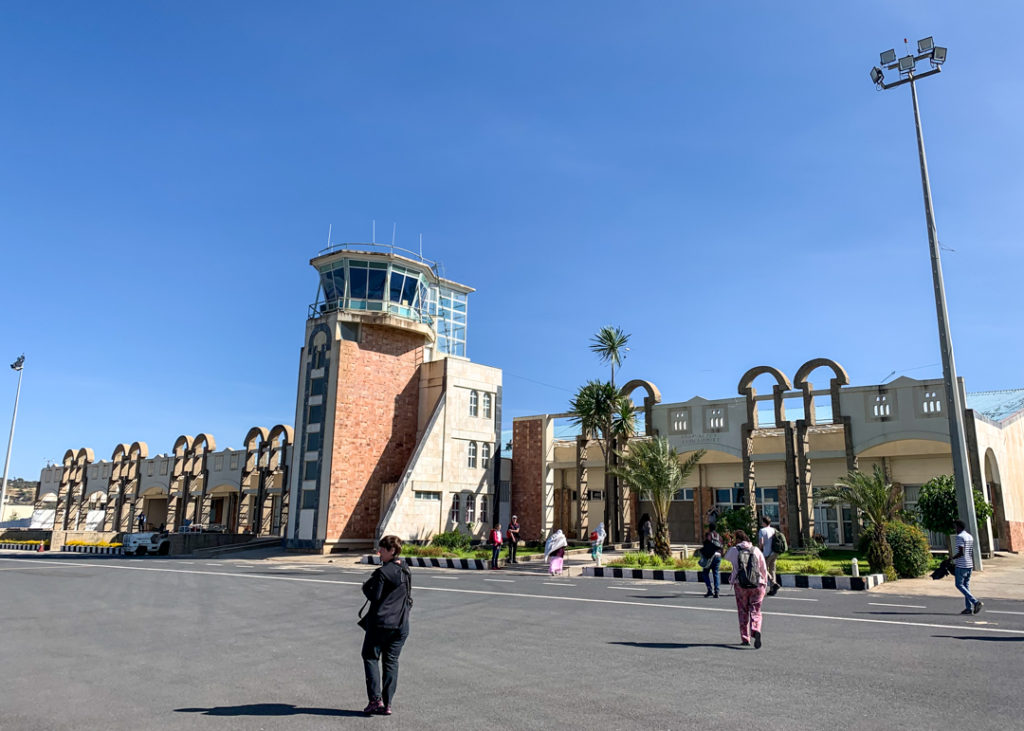
The pleasant town center has a wide cobbled main street flanked on both sides by flowering trees and shops. A beautiful and antique backdrop for all the processions and pilgrimages the town attracts which leads you straight to the main cluster of attractions all visitors come here for.
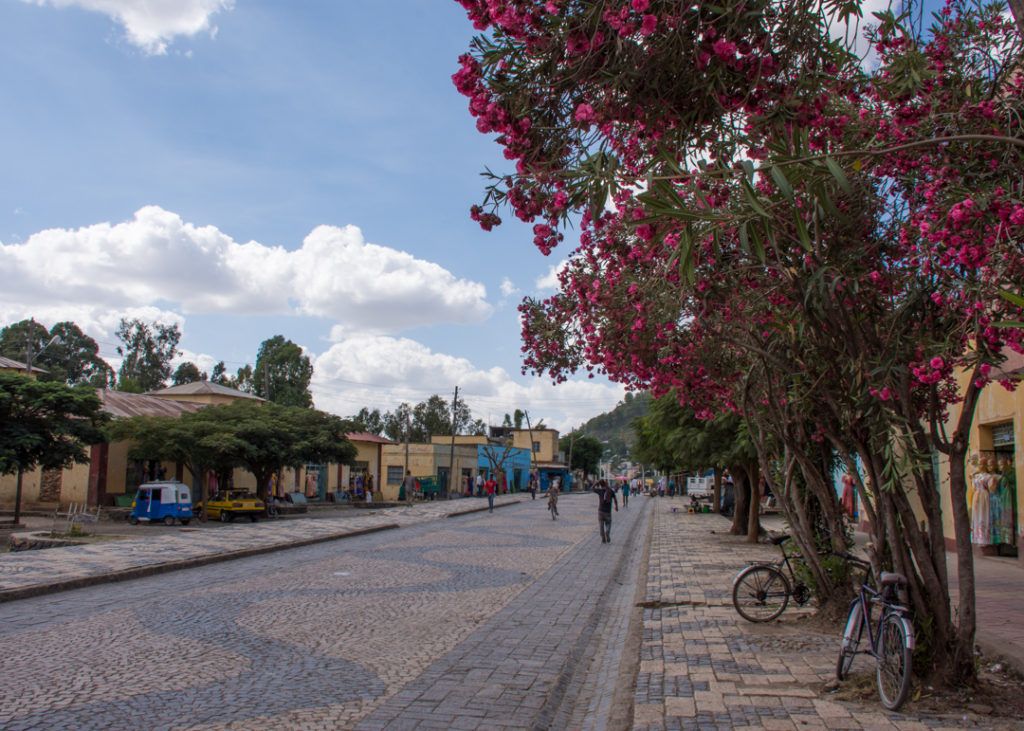
Aksum’s most iconic site is the Stelae Park which dates back at least 1,700 years. A field of monolithic obelisks shrouded in mystery with very little known as to how they were erected and when.
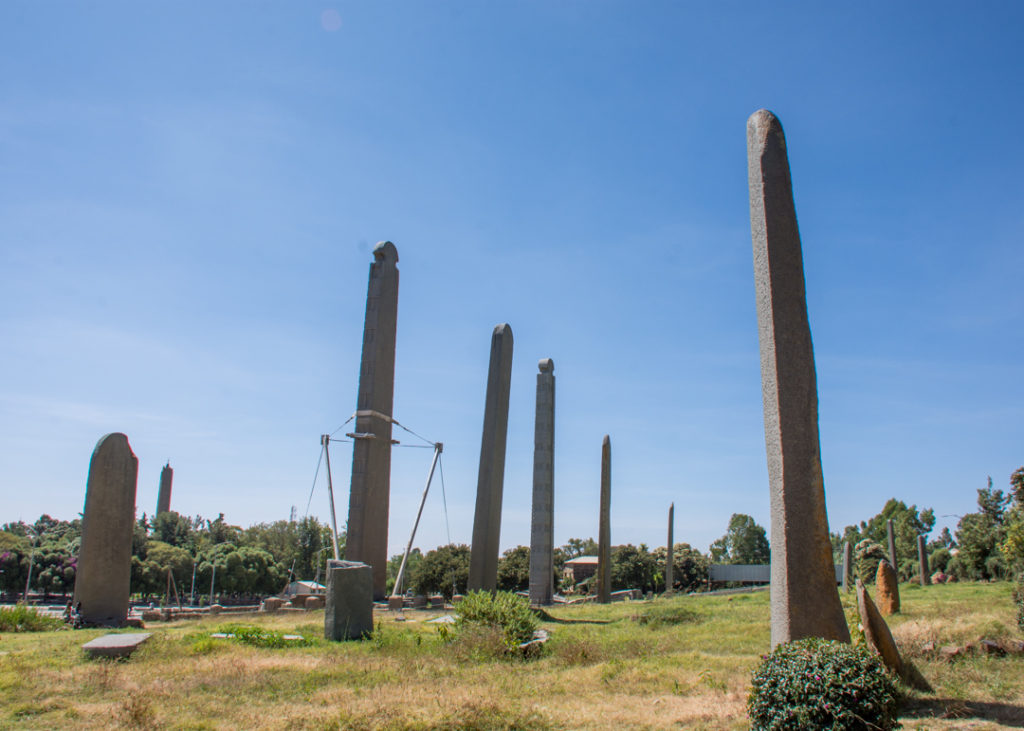
It is believed though that three of them are probably the tallest obelisks ever erected in ancient times with a height between 23m and 33m (that’s like a 10-story building!). How were they able to erect such massive blocks of stones? One theory involves elephants and pulleys, another one supernatural powers from a biblical source…
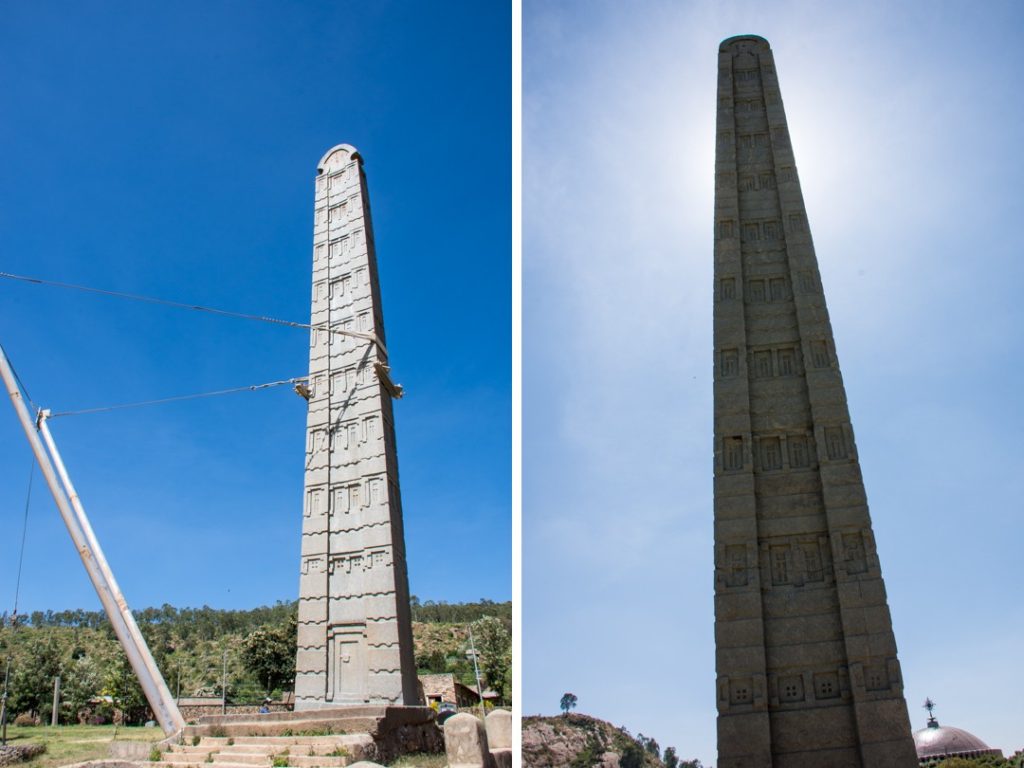
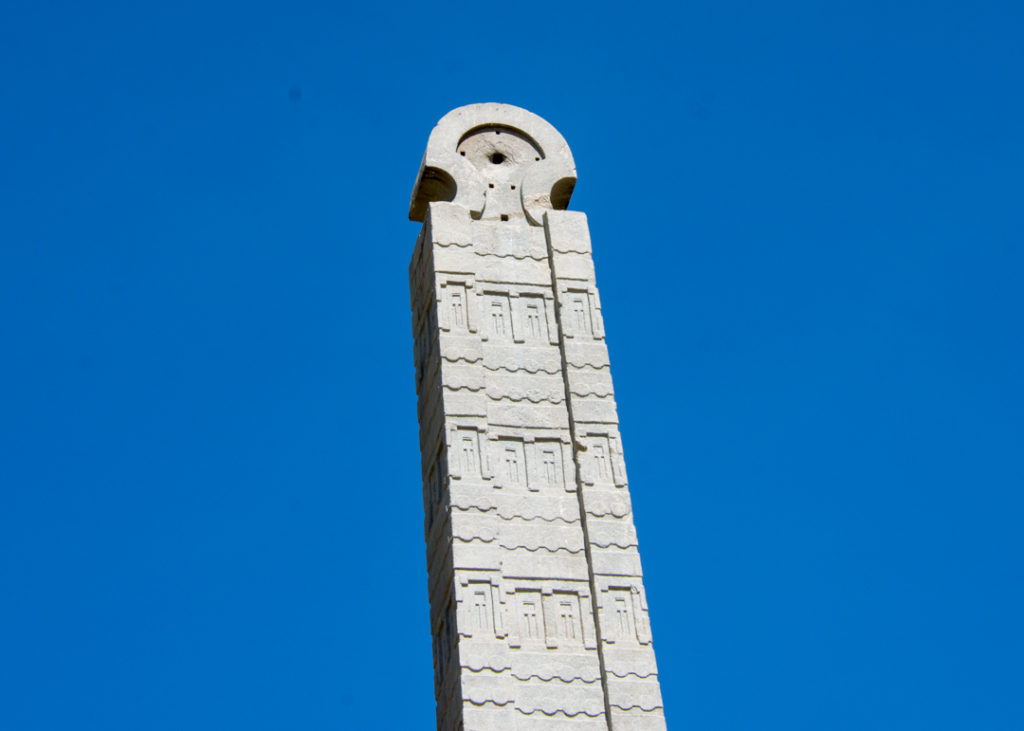
The carvings of windows and doors combined with their location near tombs would lead us to believe they were meant as symbolic portals to the afterlife for the elite rulers.
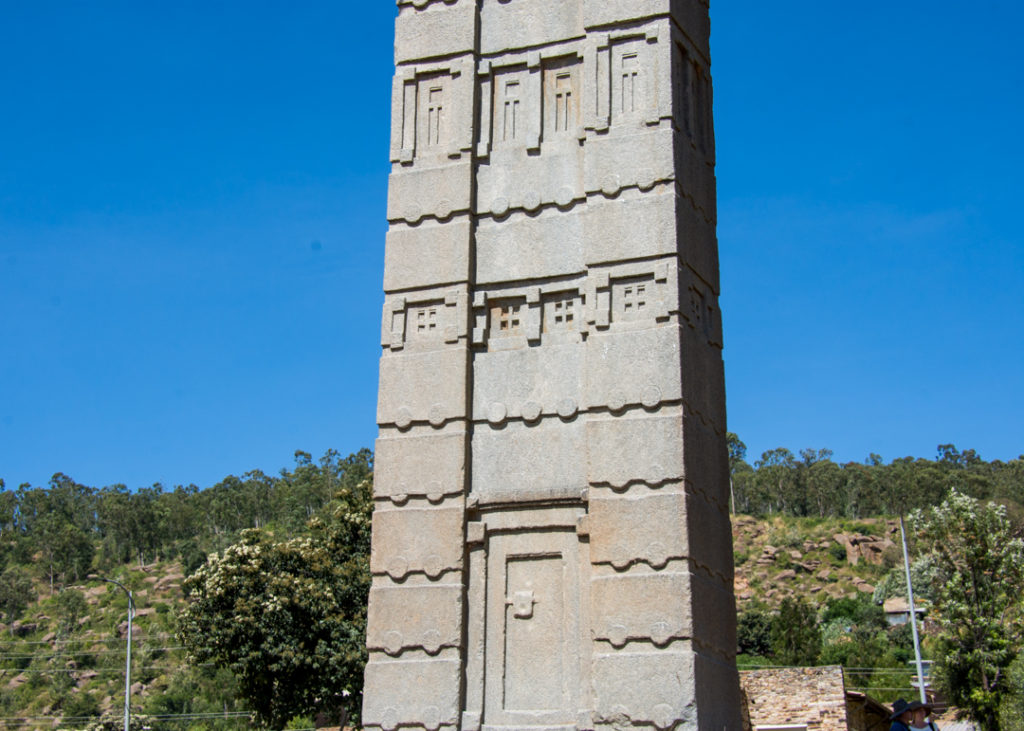
The largest one has shattered into several pieces right by the entrance of a subterranean tomb open to visitors.
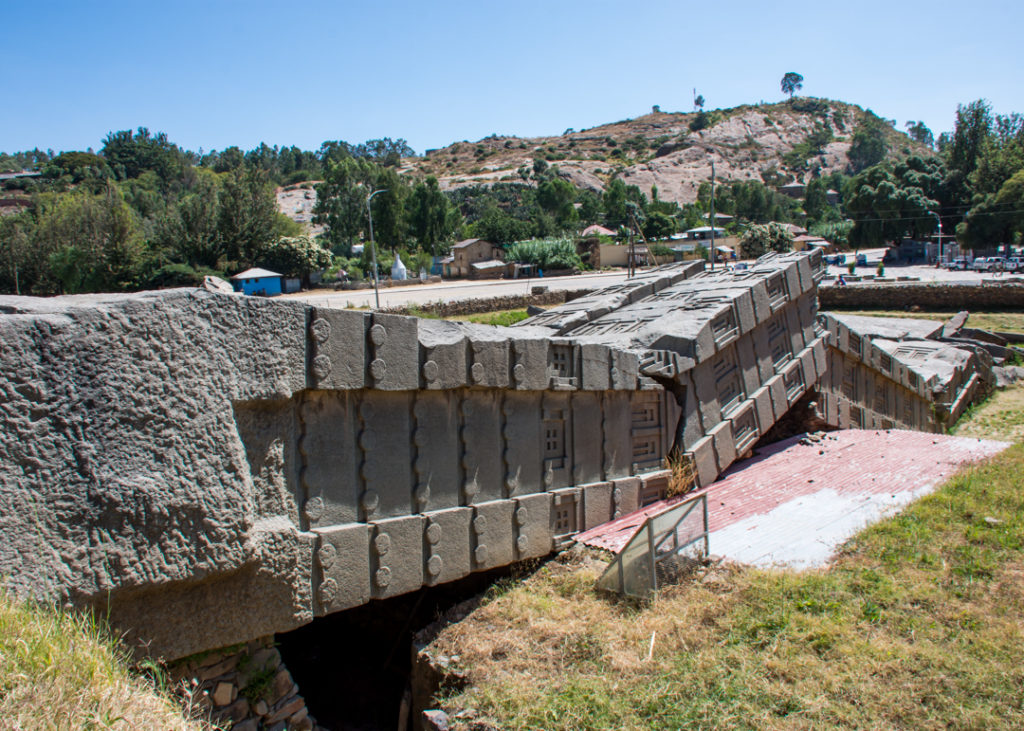
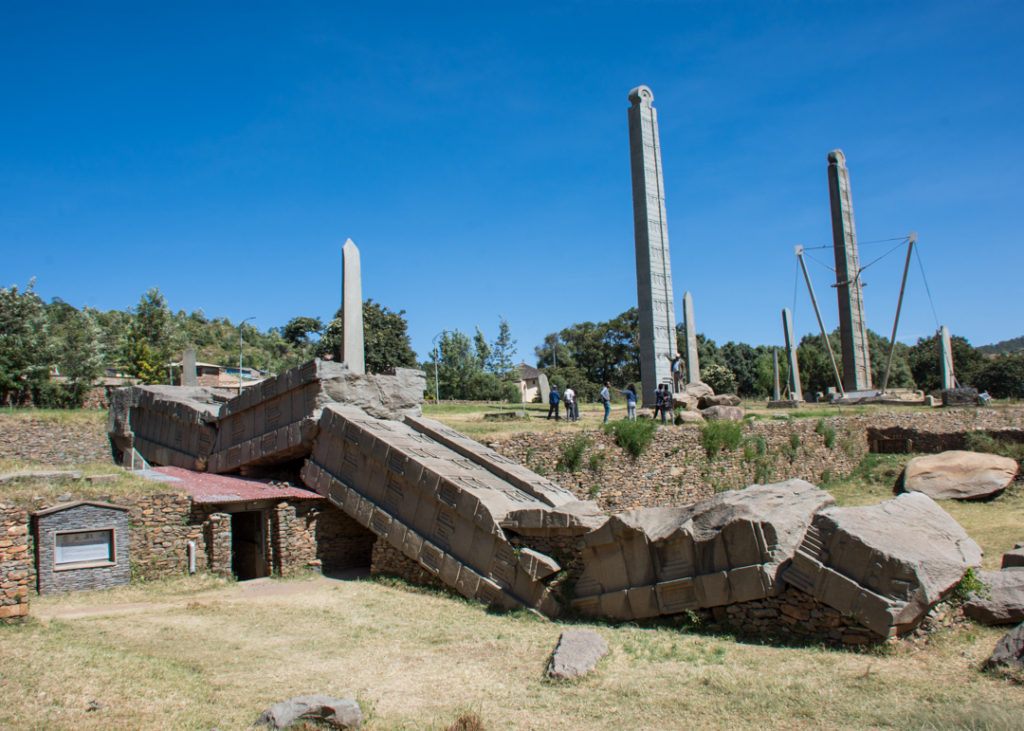
One flight of stairs down, a corridor leads to twelve underground vaults tall enough to walk through.
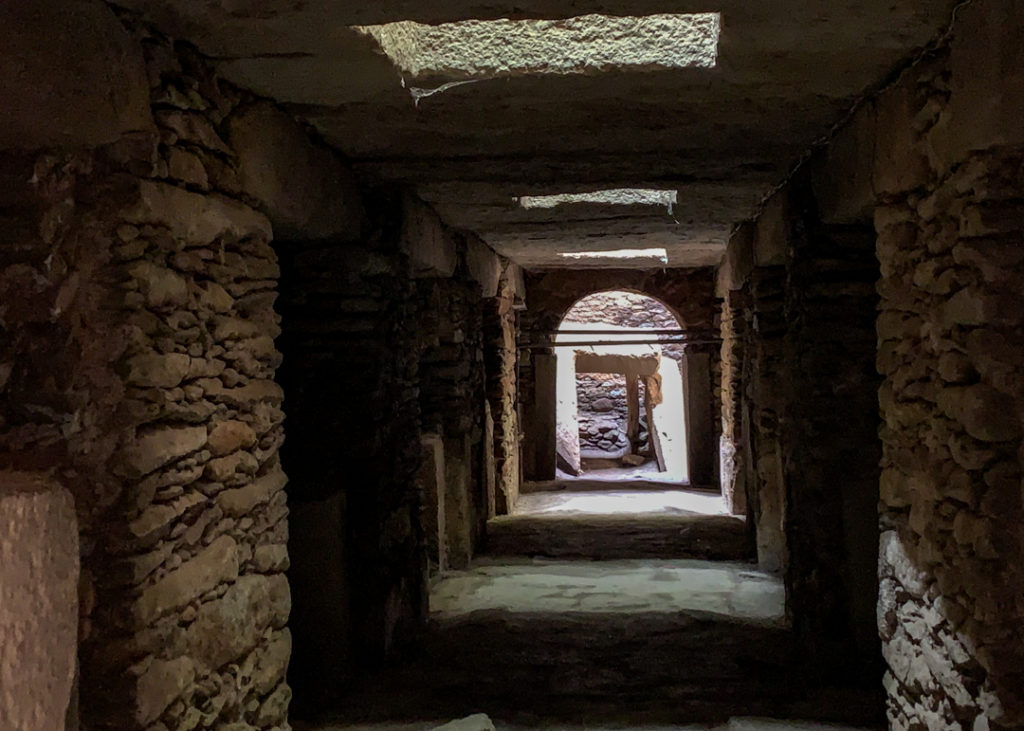
The last one still contains the sealed stone coffin of Remhai, Ethiopia’s king in the 3rd century. The excavations were abandoned following the 1974 revolution.
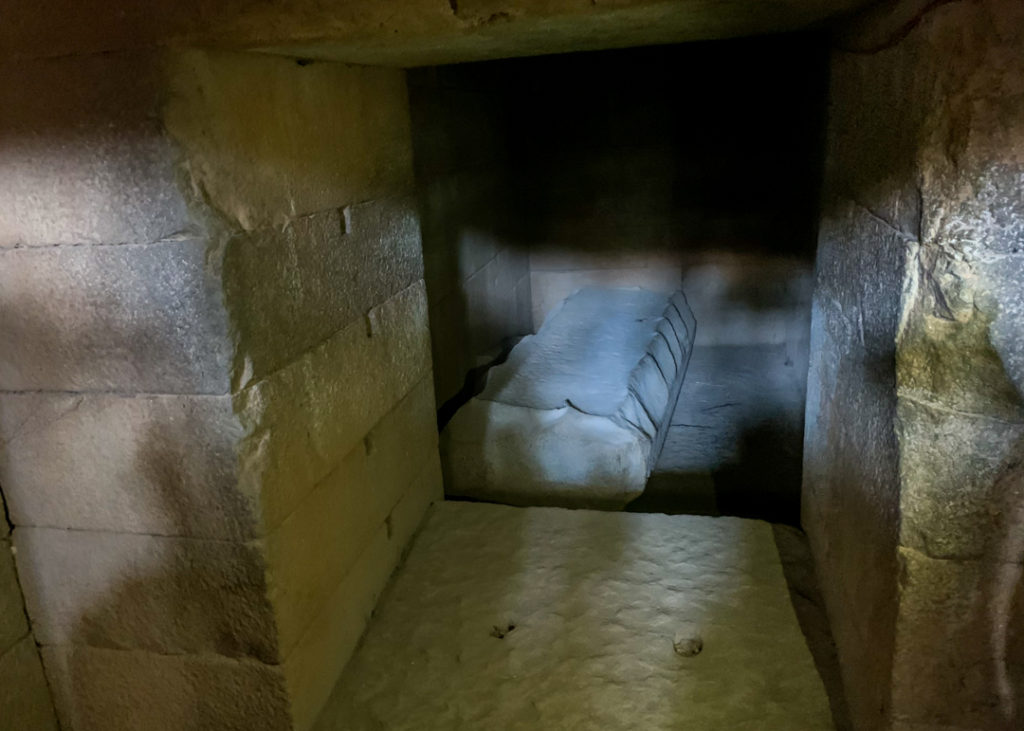
Other tombs are slowly being discovered but a lot of work remains – 90% of Aksum has yet to be excavated so imagine what else is hiding underneath it all!
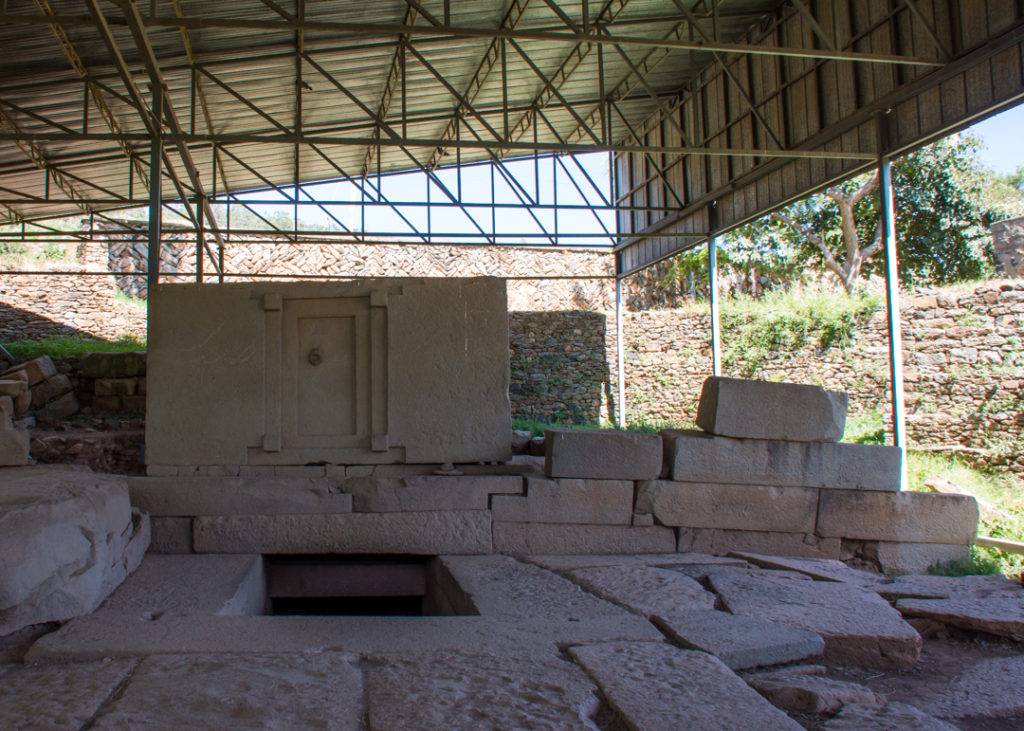
In the meantime, vervet monkeys are enjoying the piles of granite blocks and cooling shade of the sites.
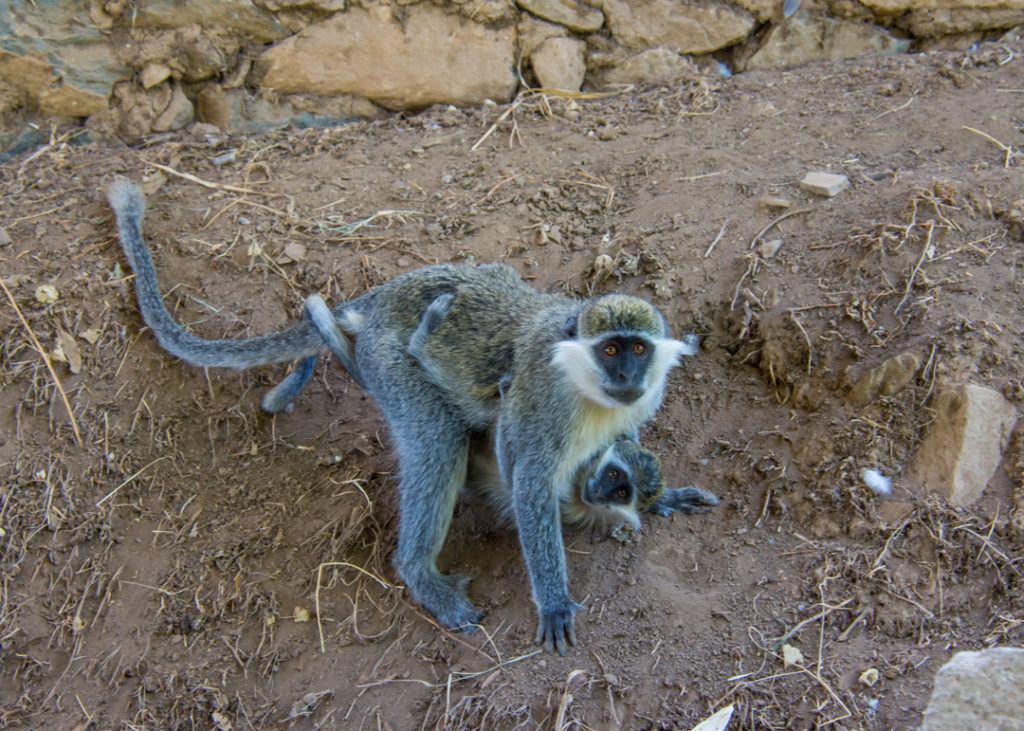

Local craft is a pleasure to look at (and shop for) as it varies greatly between regions and is always so beautiful.
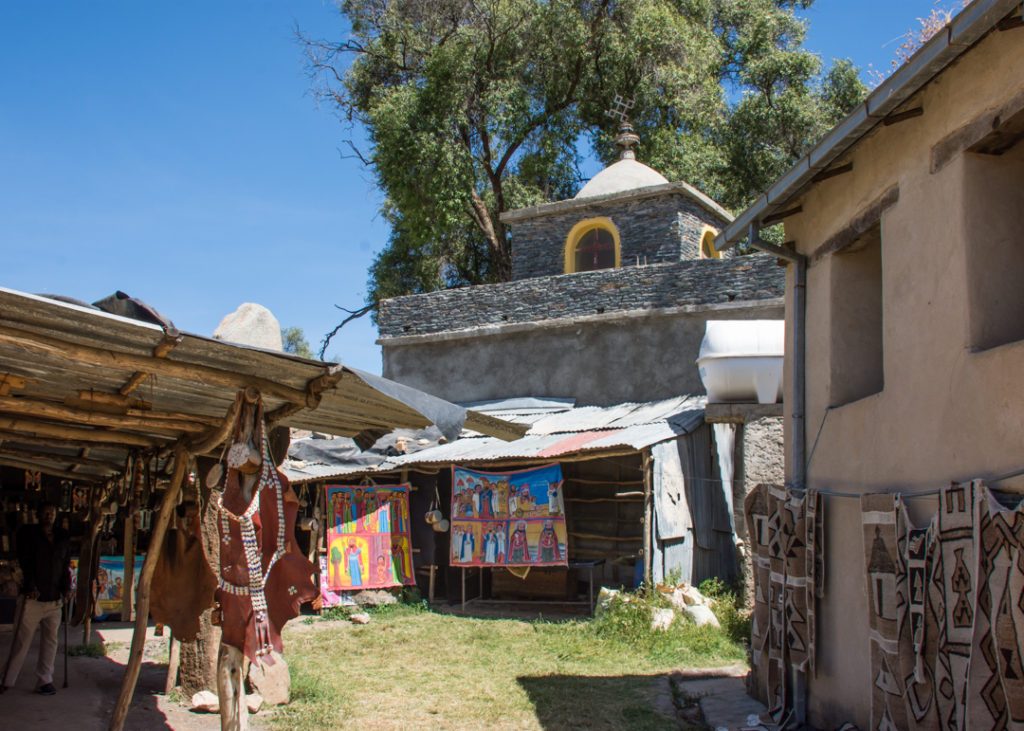
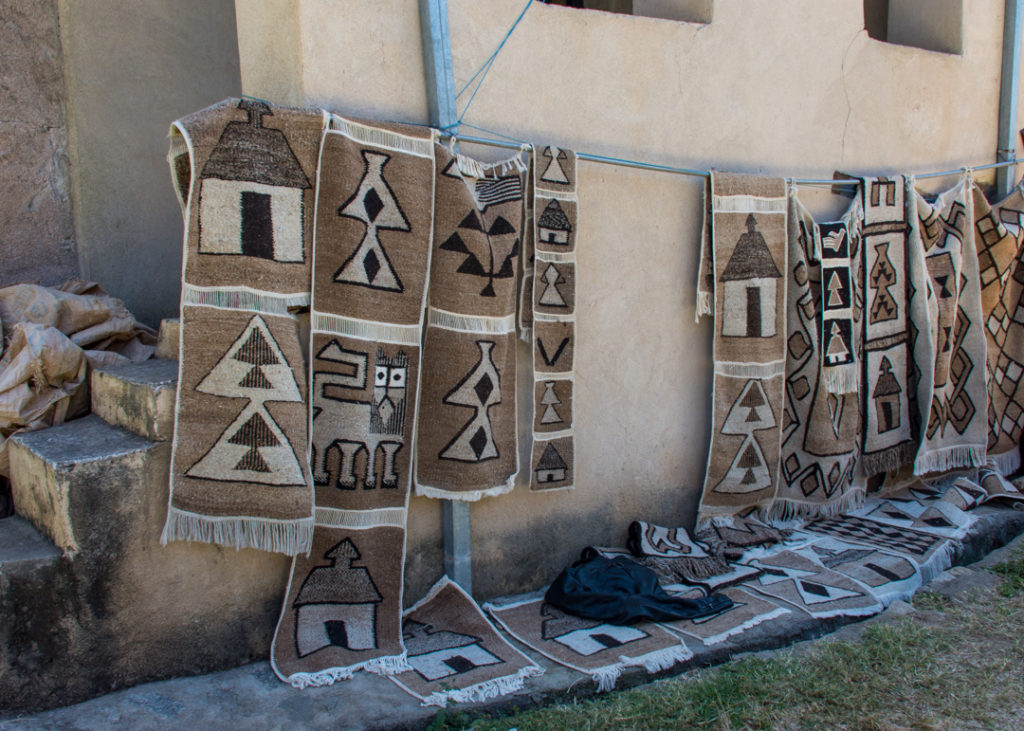
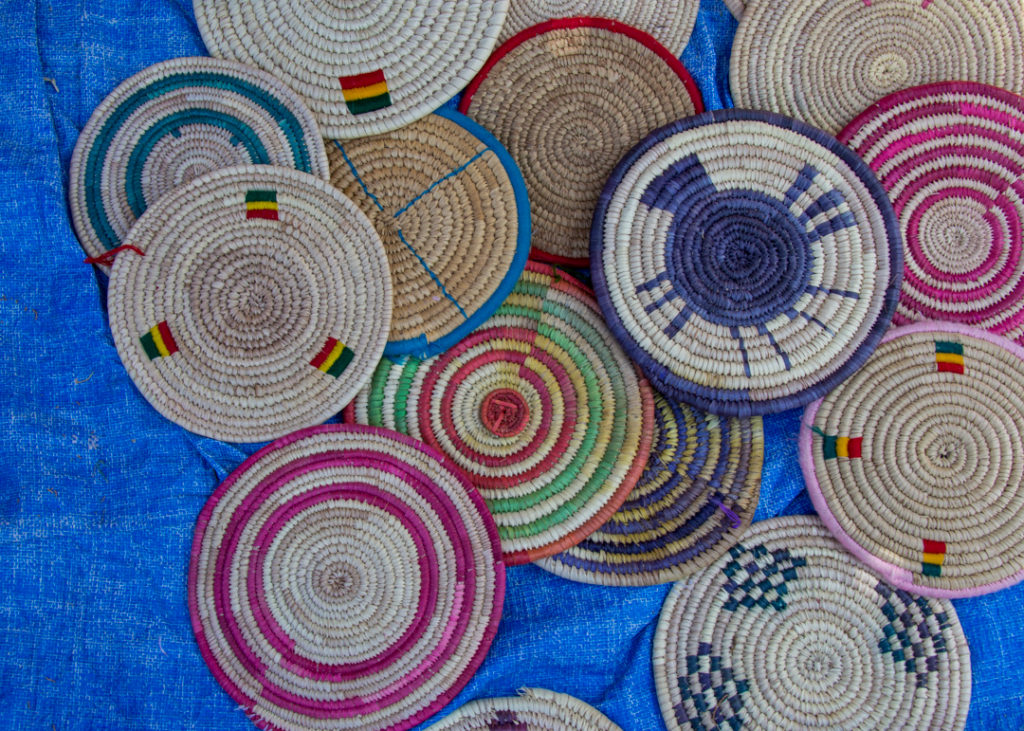
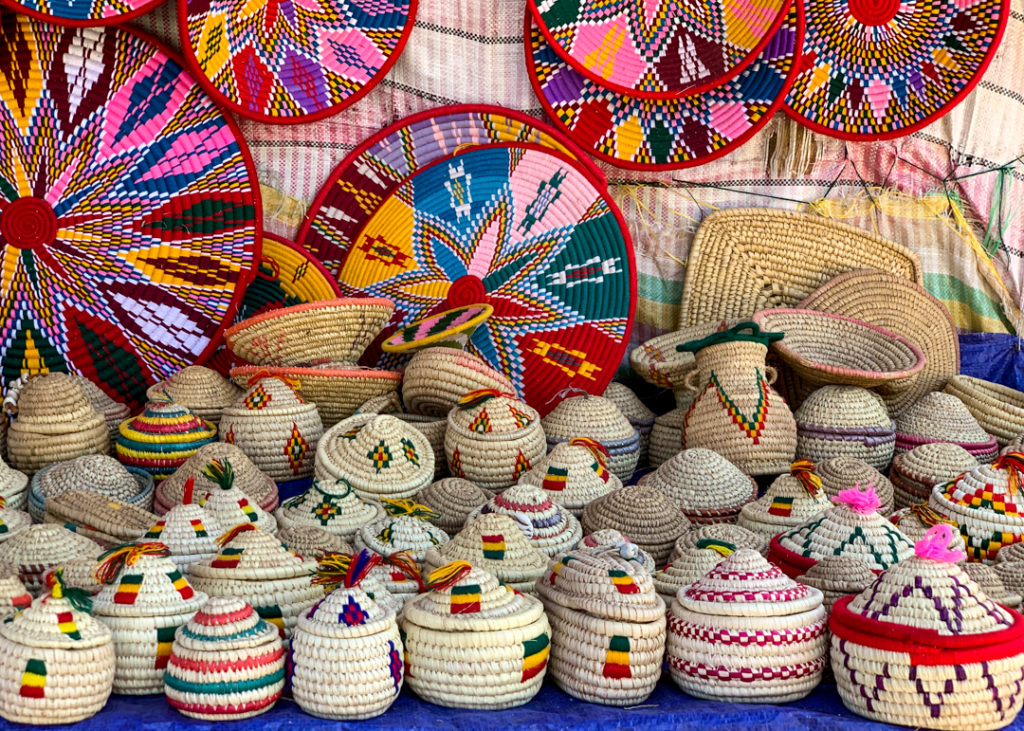
The Tigray region is especially known for its super colorful tableware, the likes of which I didn’t see in any other parts of the country.
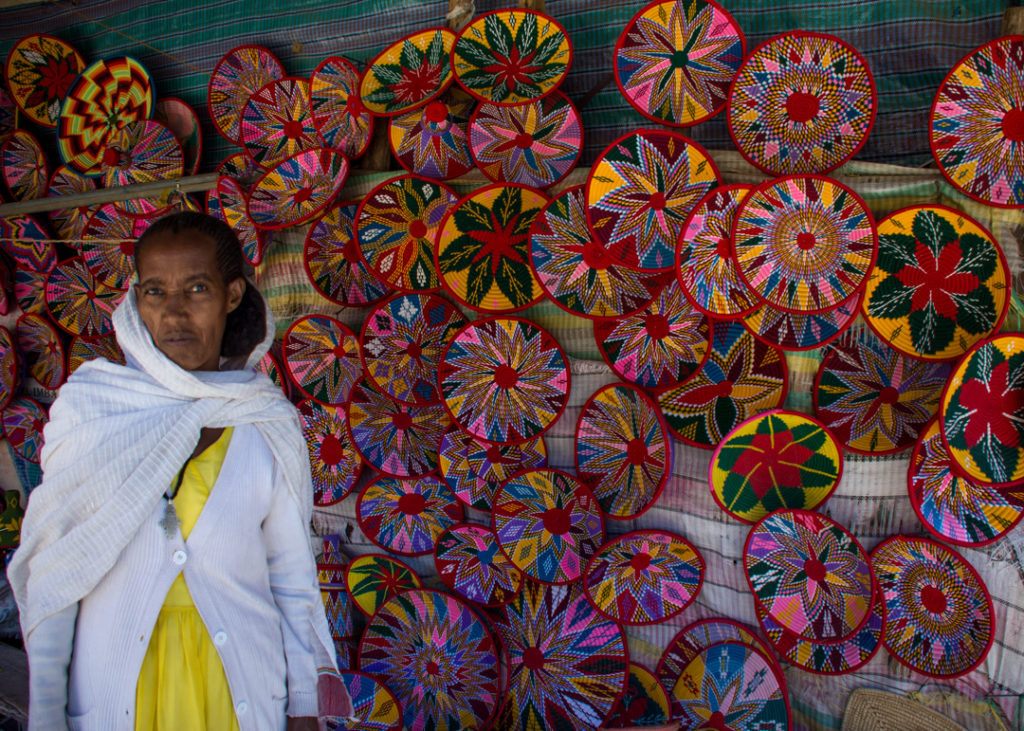
From the stelae park, you don’t have far to go for the next big destination which you can see right across the street behind the trees.
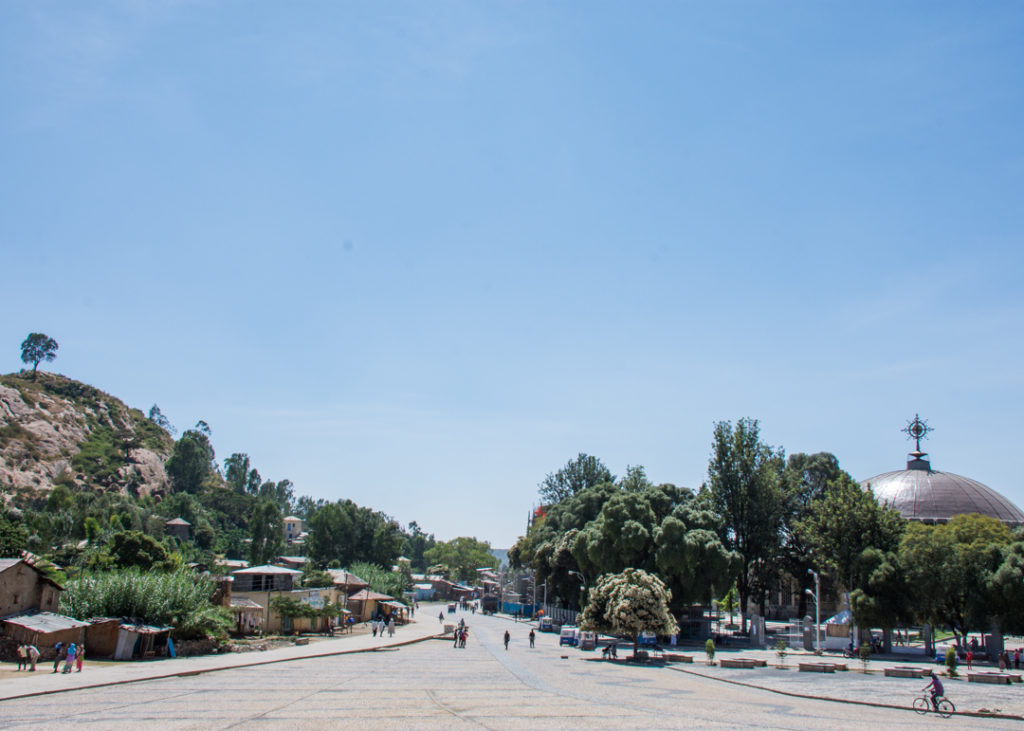
The Cathedral of St. Mary of Zion is Ethiopia’s first church dating back to the 4th century. The original church has been destroyed and a new, modern cathedral was built in the 1960s under Haile Selassie.
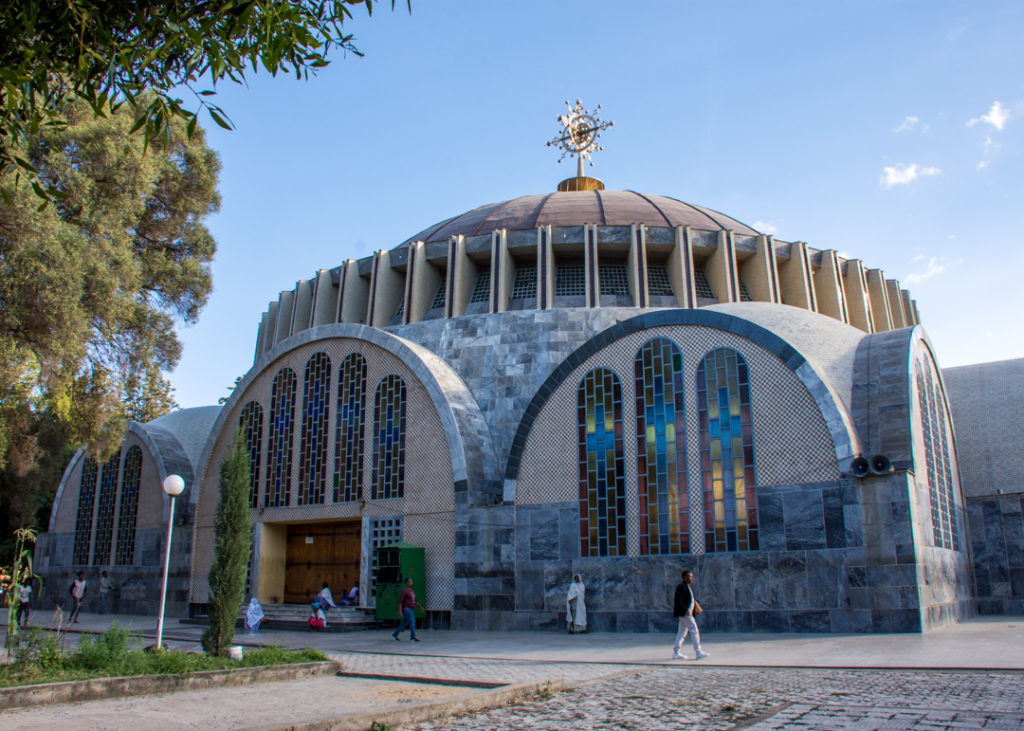
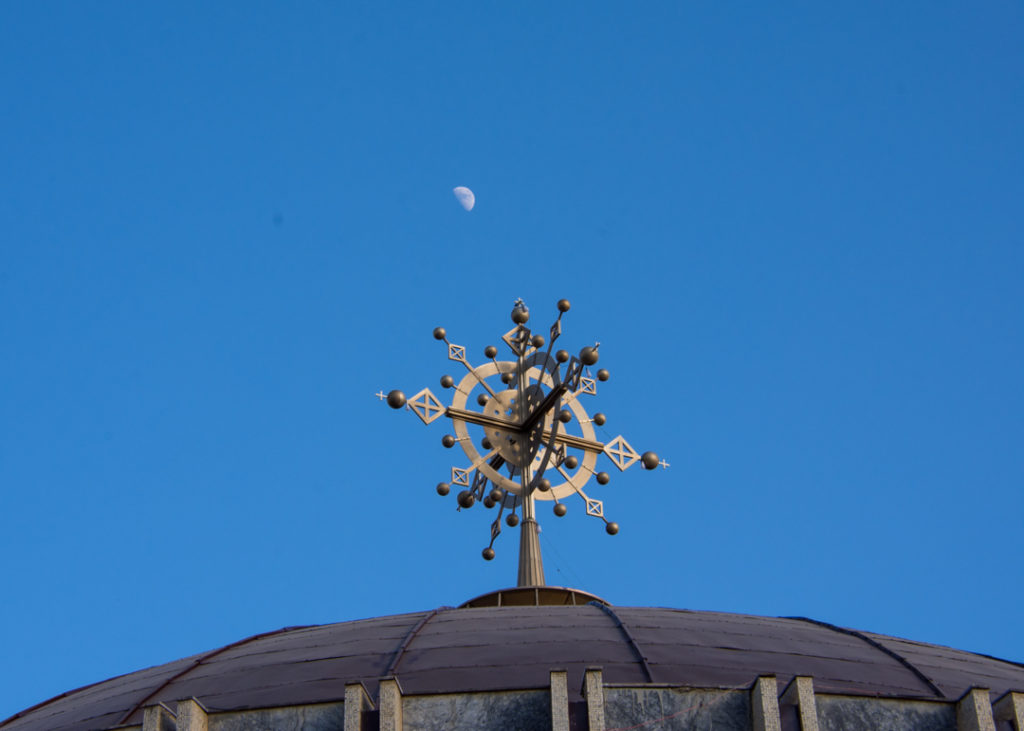
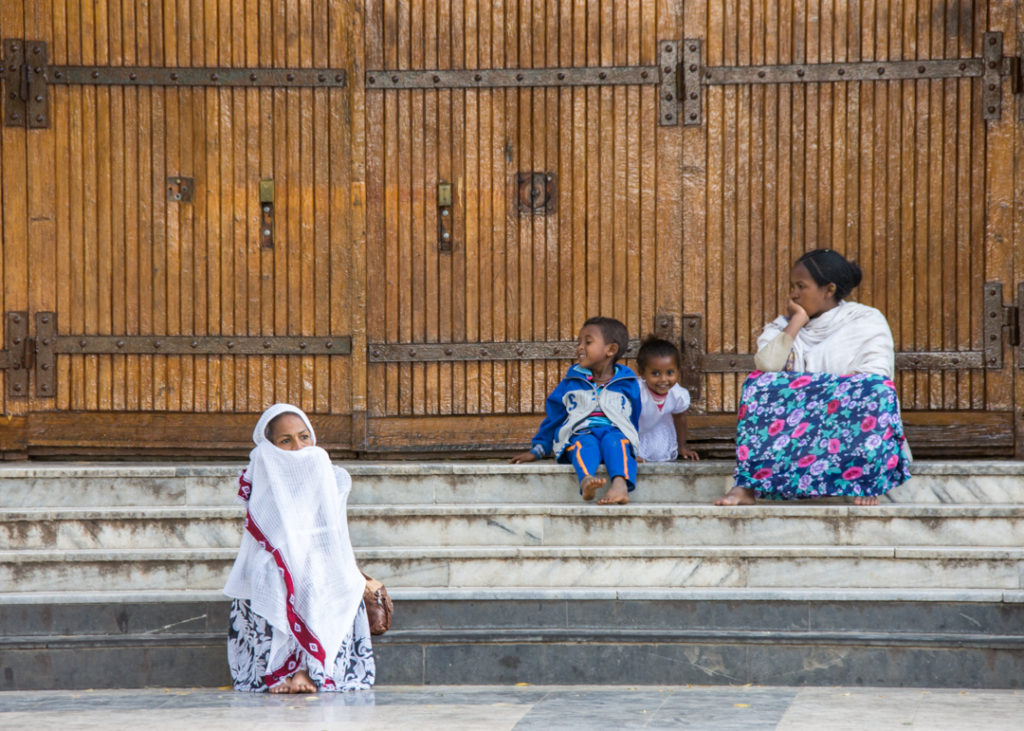
Renovation work prevented us from entering though we could glimpse at the large scale and a few paintings from the steps.
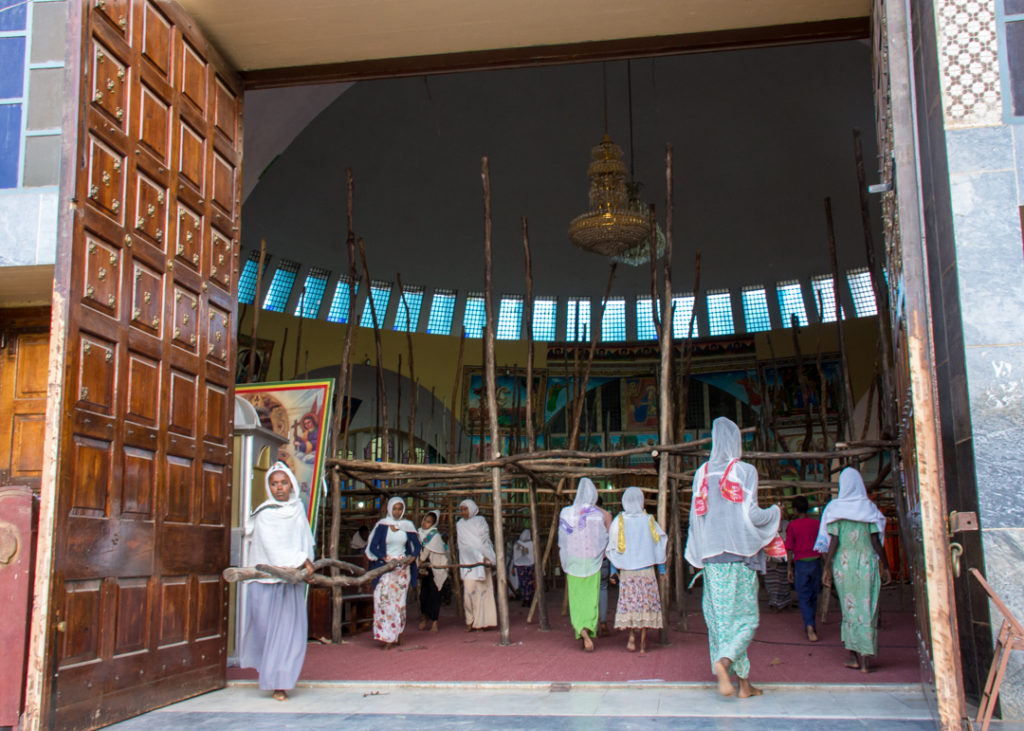
What brings most people to this compound though is not the imposing church, but a small chapel located at the back of the cathedral. The square building to the right in the below photo is said to hold Axum’s most famous religious artefact – The Ark of the Covenant. For those who need a little brush up on the Christian tradition, the Ark of the Covenant is a casket God had asked Moses to make, according to the Hebrew Bible, to hold the Ten Commandments. Locals assert that both the Ark and its commandments still reside in Aksum.
A very precious relic indeed and don’t even think of going in to see it as millions would like to do – the chapel is off-limits to all but a few members of the Ethiopian Christian church hierarchy. A commonly held belief is that the son of King Solomon and Queen of Sheba captured the Ark of the Covenant and brought it to Aksum nearly 3,000 years ago. It has since been guarded by a succession of virgin monks who, once anointed, are forbidden to set foot outside the chapel grounds until they die.
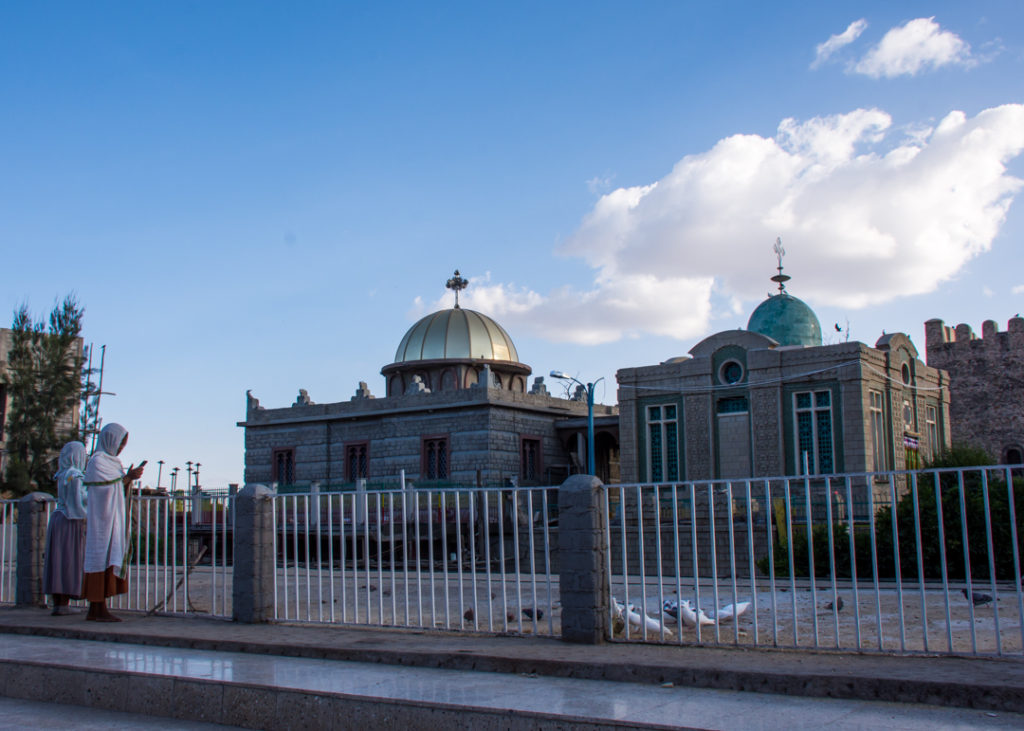
It’s a lot to cram into one morning and lunch break felt like a necessary pause to process thousands of years of stupefying events and engineering feats. For once we skipped the traditional Ethiopian meal in favor of a healthy dose of vegetables at the excellent Kuda Juice and Pizzeria downtown Aksum. I don’t think I’ve ever seen so many avocados in one sitting…

Afterwards, we took to the streets before hitting more archaeological sites to get a better feel for Aksum. All roads seem to lead to Daero Square, the hub of city life, and the perfect place to people watch.
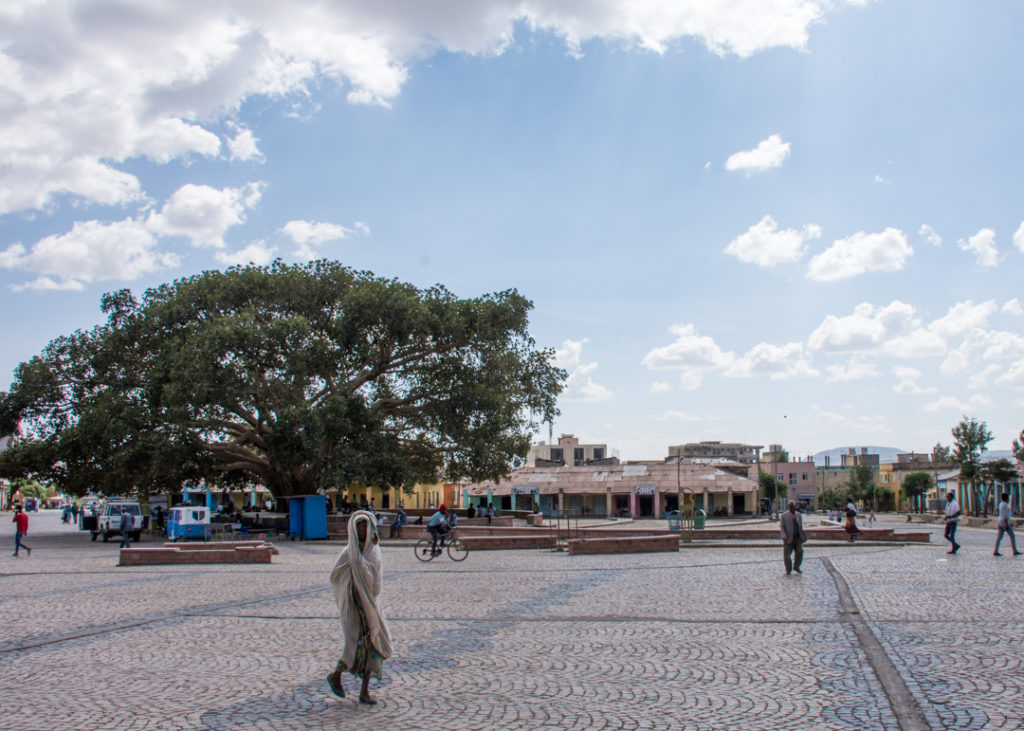
A giant fig tree reigns in the middle of it all and provides shelter on top of great photographic opportunities.
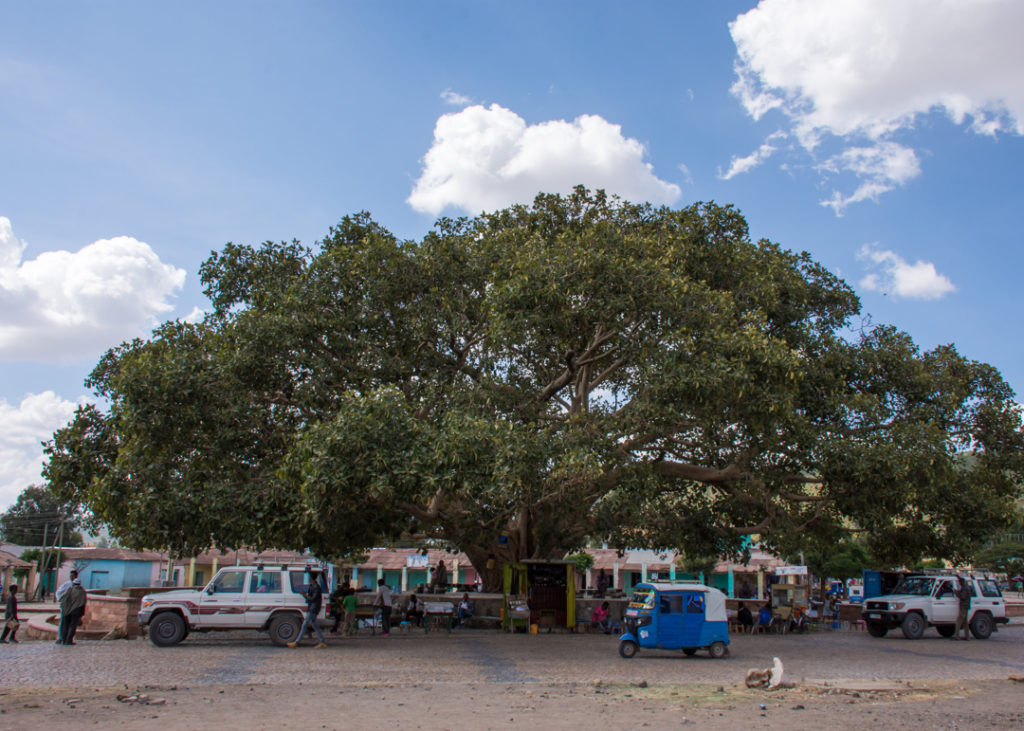
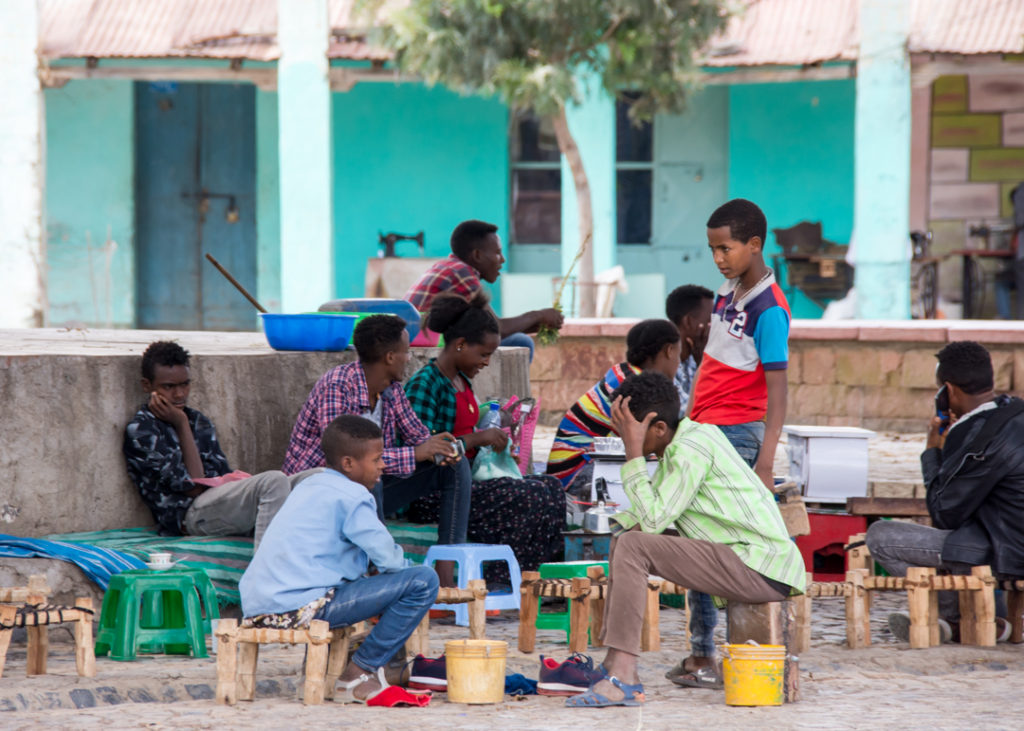
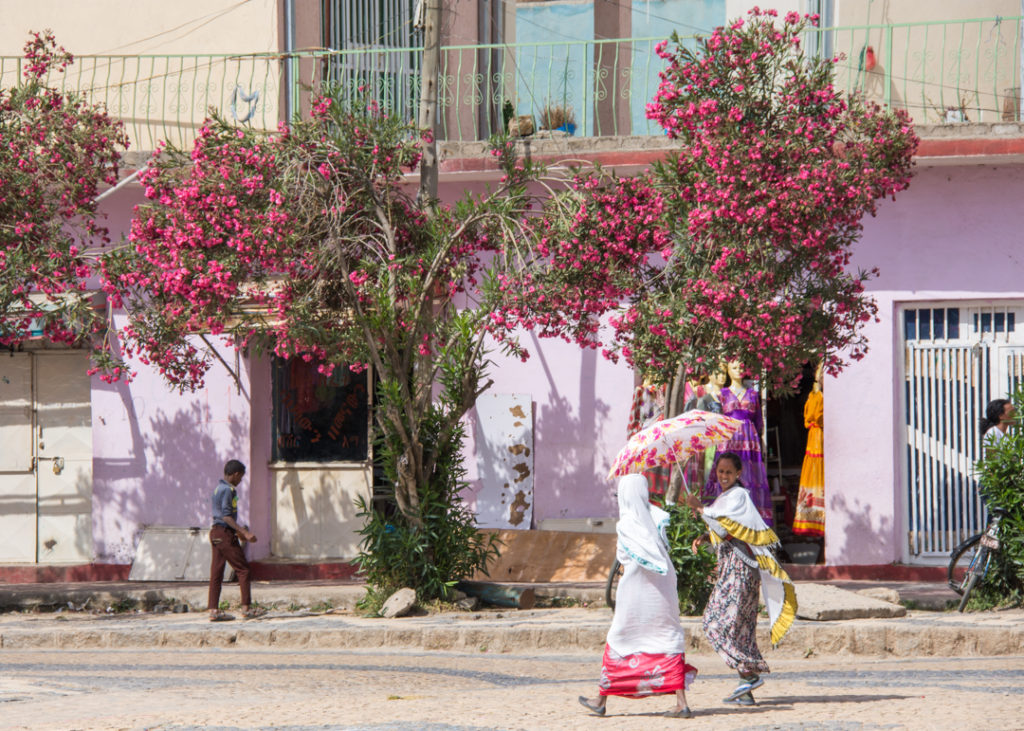
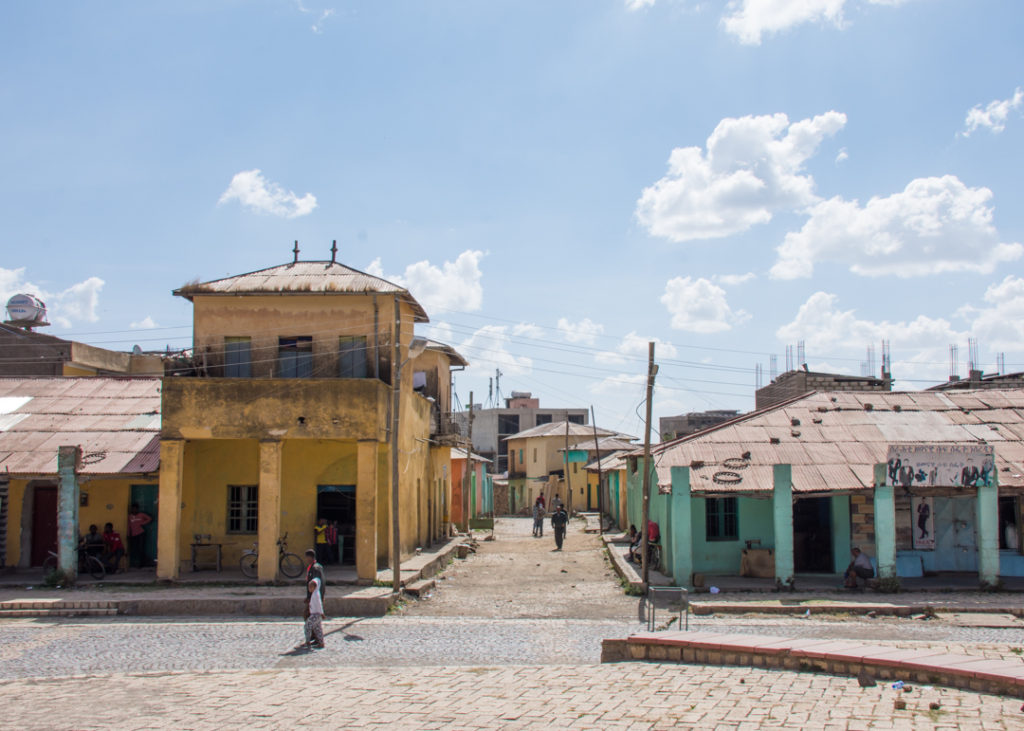
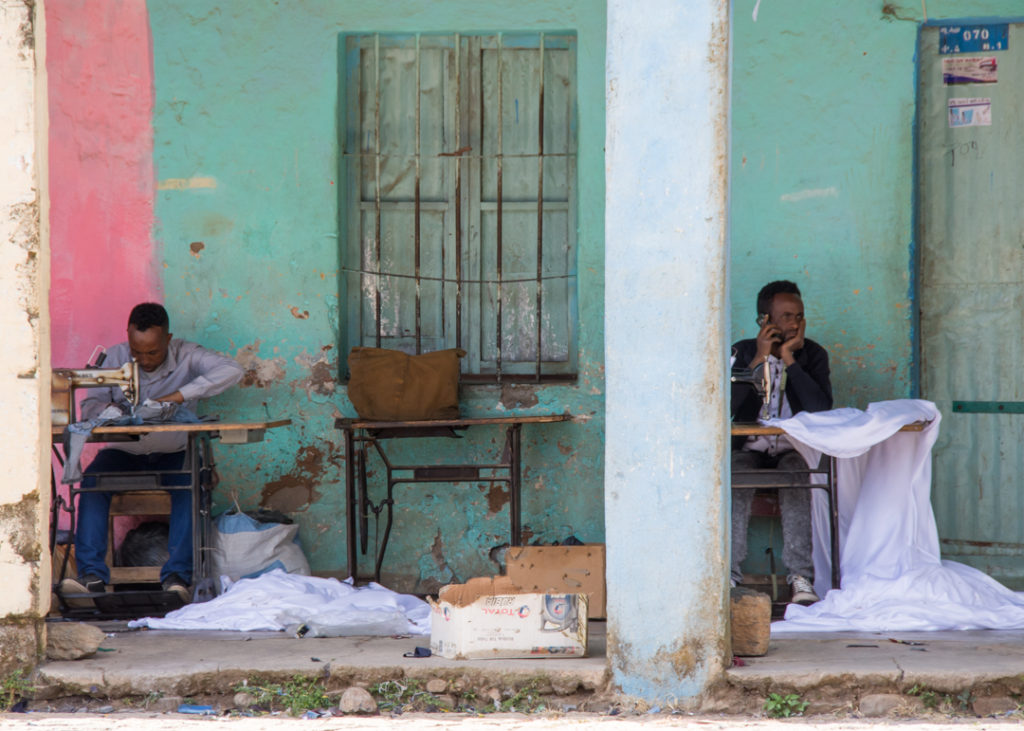
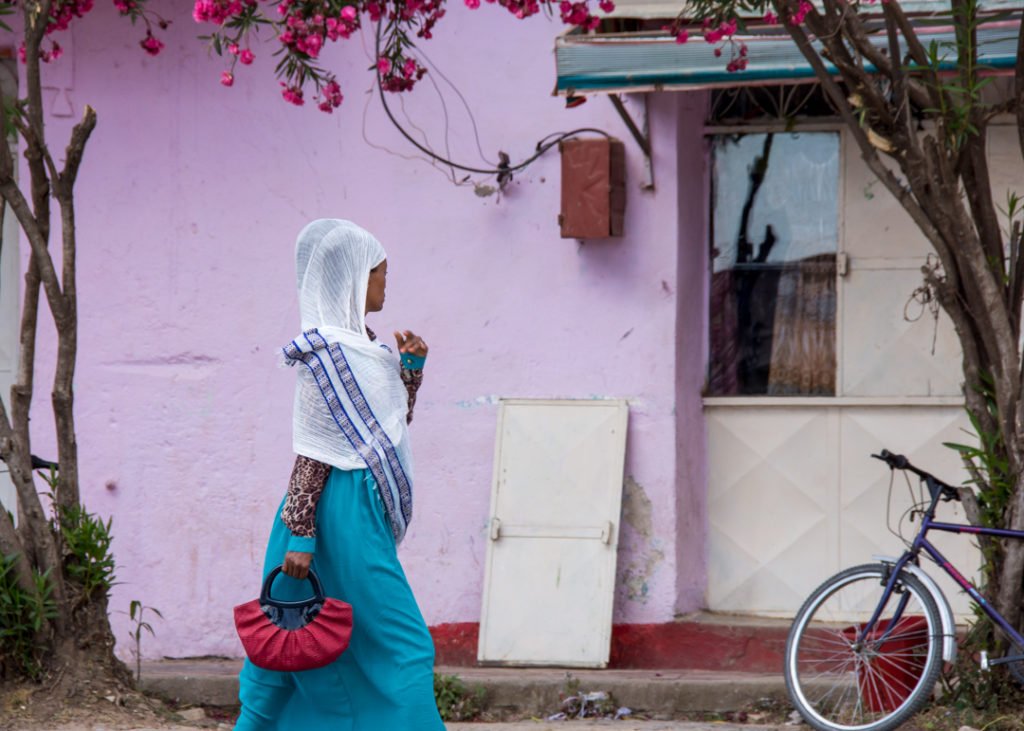
I kept going back to the main street which is now called ‘Denver Street’ since Aksum became a ‘sister city’ of Denver in Colorado in 1995.
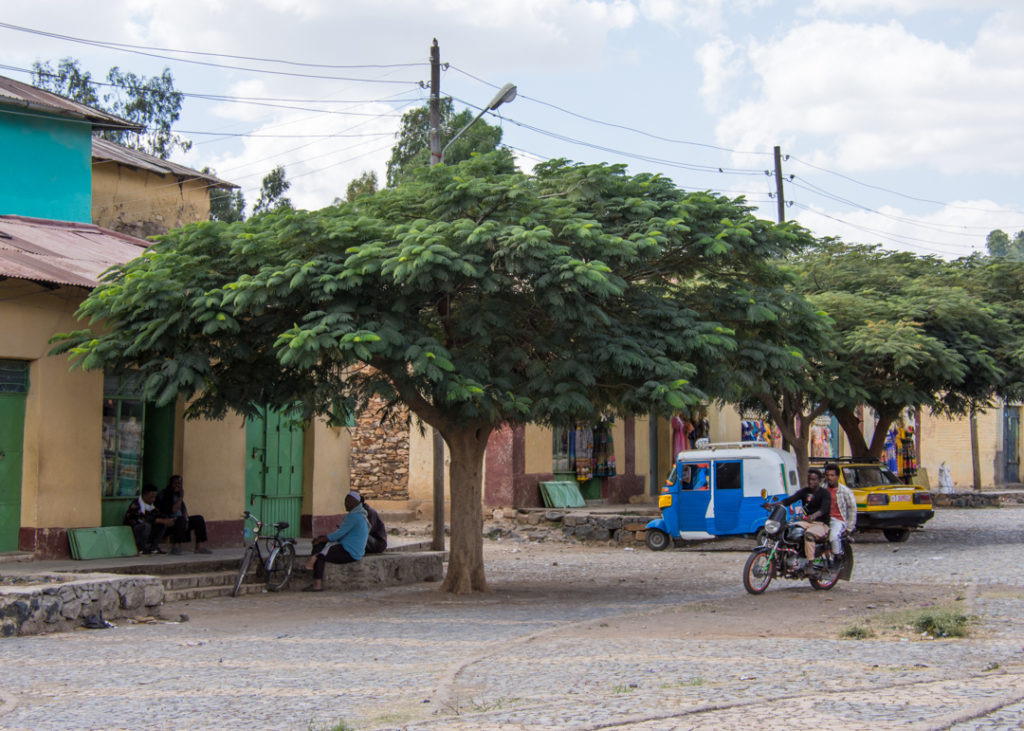
At midday, sidewalks were filled with mini coffee shops with the aroma of roasting coffee in the air and plastic stools waiting for passersby under tree canopies.
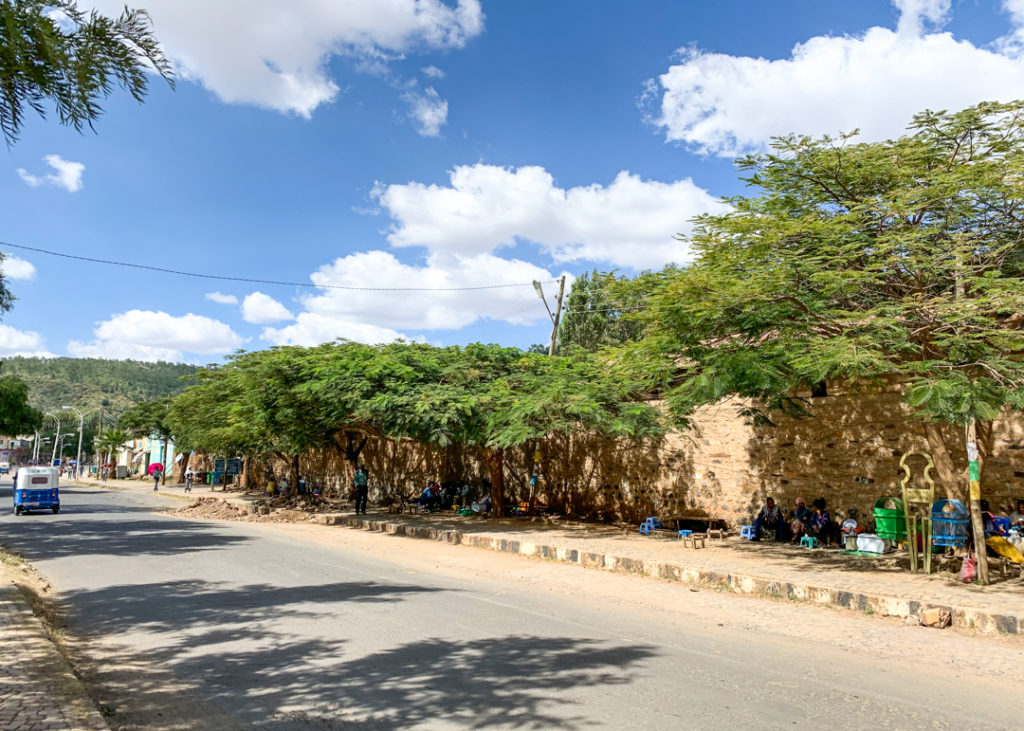
A few feet away, the brand new tourist office hints at the increased popularity of this ancient kingdom.
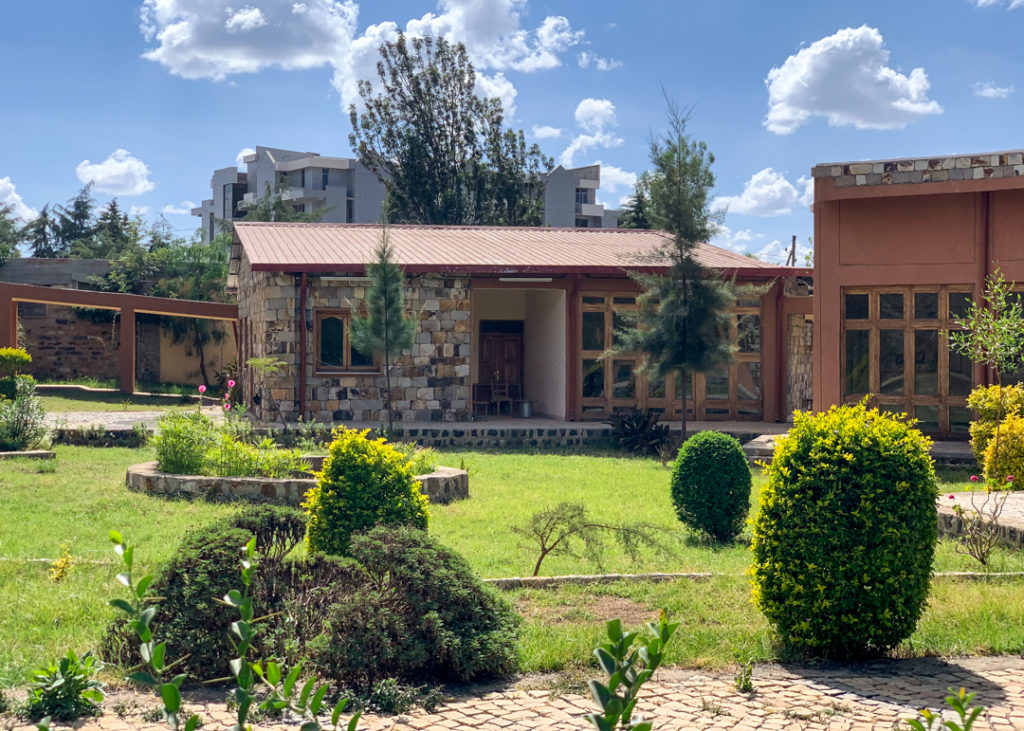
Slightly out of town, Dongar Palace adds a few more mysterious pieces to Aksum’s puzzle, and it does so in charming surroundings.
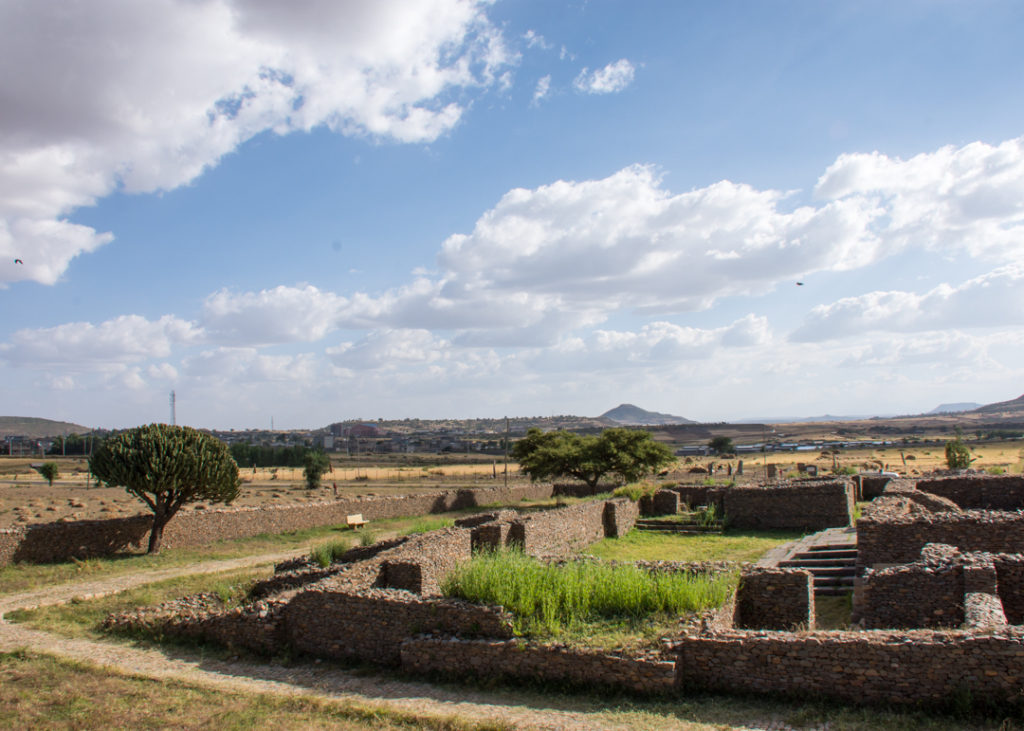
Looking at this vast agricultural land and the ruins of what was the most impressive palace ever constructed in Aksum helps to see the city as it once was: The Kingdom of Aksum, one of the greatest powers on earth. Its central place made it a major trade city between Persia and Rome and it flourished between the early 4th century BC until the 10th century AD.
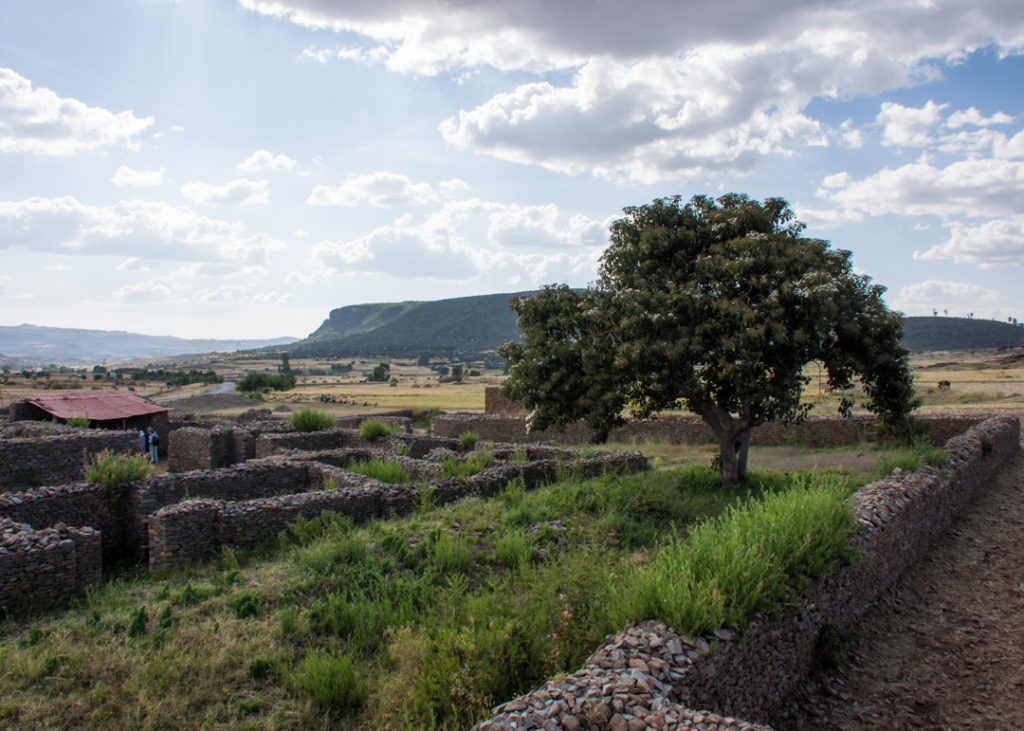
Many Ethiopians believe this palace was once the home of the Queen of Sheba (a fact archaeologists dispute) and they consider her the mother of the nation. She’s certainly one of the most mysterious female figures in all of history and I remember chasing her steps all the way to Oman on a previous trip.
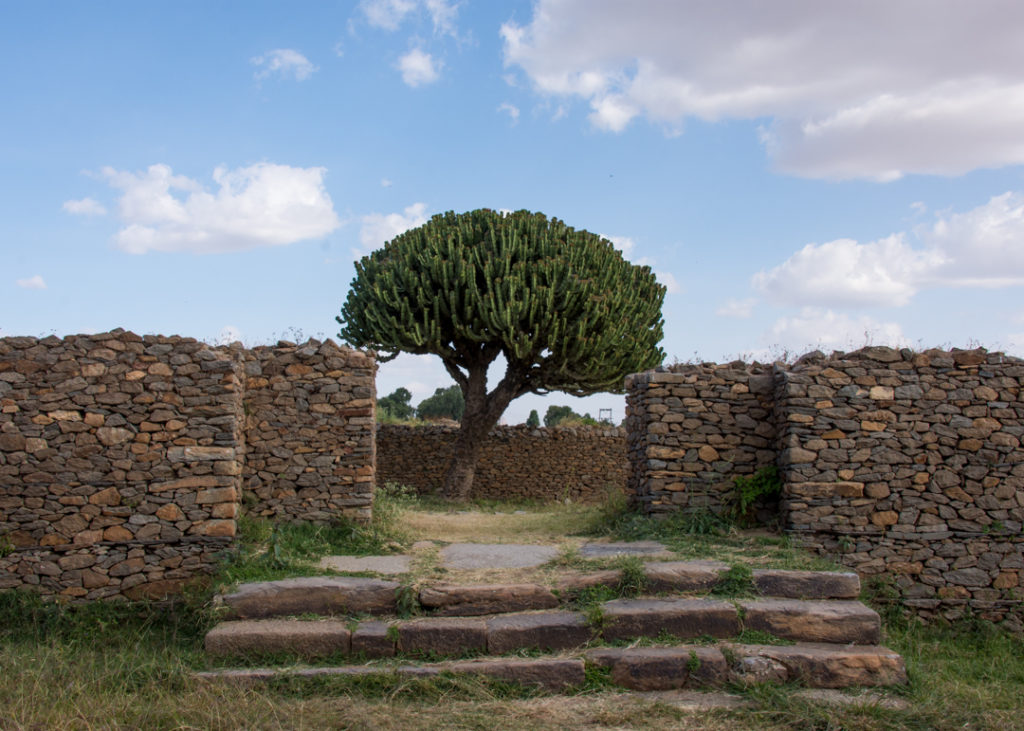
There were over fifty rooms in here, a bakery and an elaborate drainage system, all of which can be seen albeit with a bit of imagination.
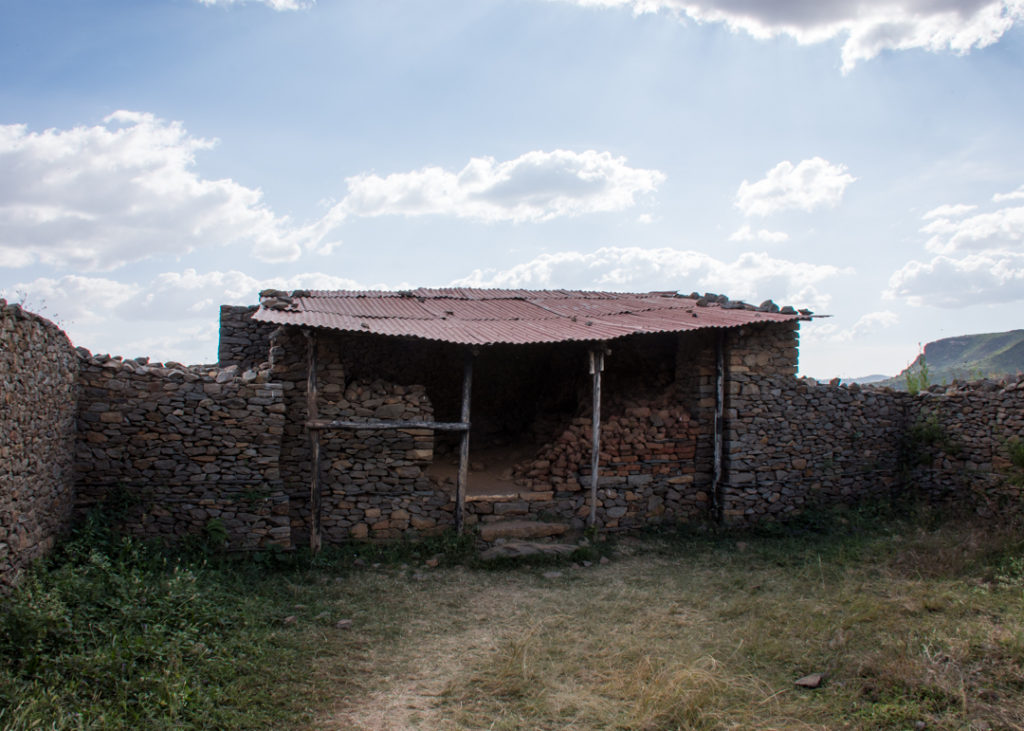
The throne room, facing the main entrance, makes you think “if only these walls could talk”. Oh the things they must have seen…
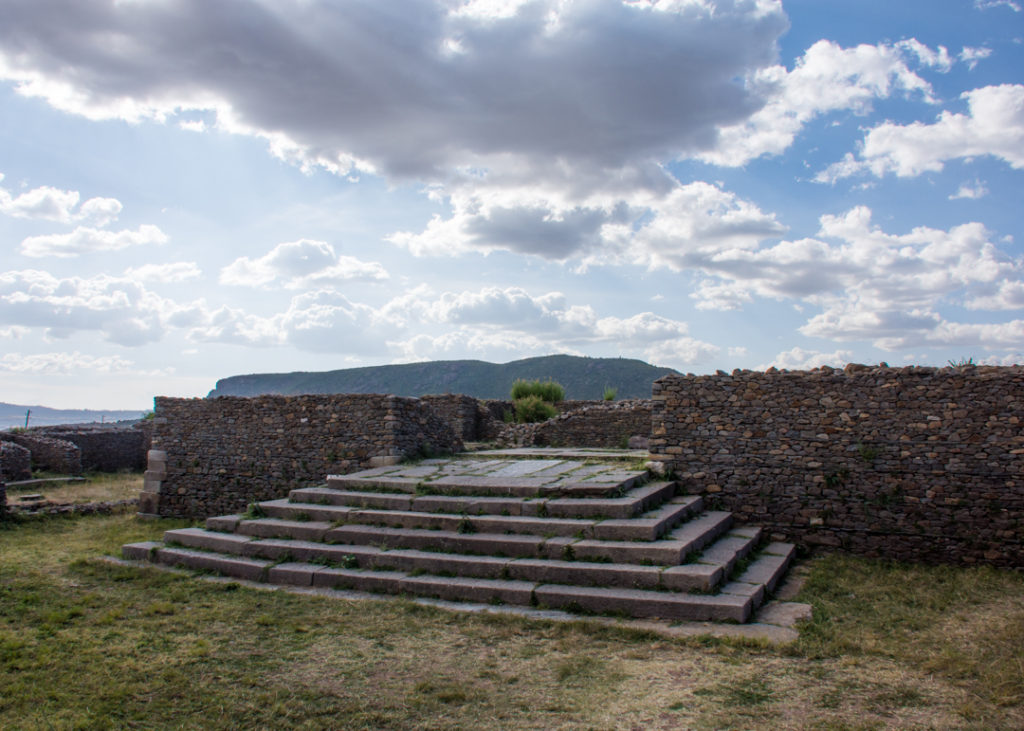
A look around the palace grounds and it seems things haven’t change that much with time in these parts. Farmers are seen everywhere plowing and harvesting fields of barley and teff by hand with not a single motorized tool or vehicle in sight.
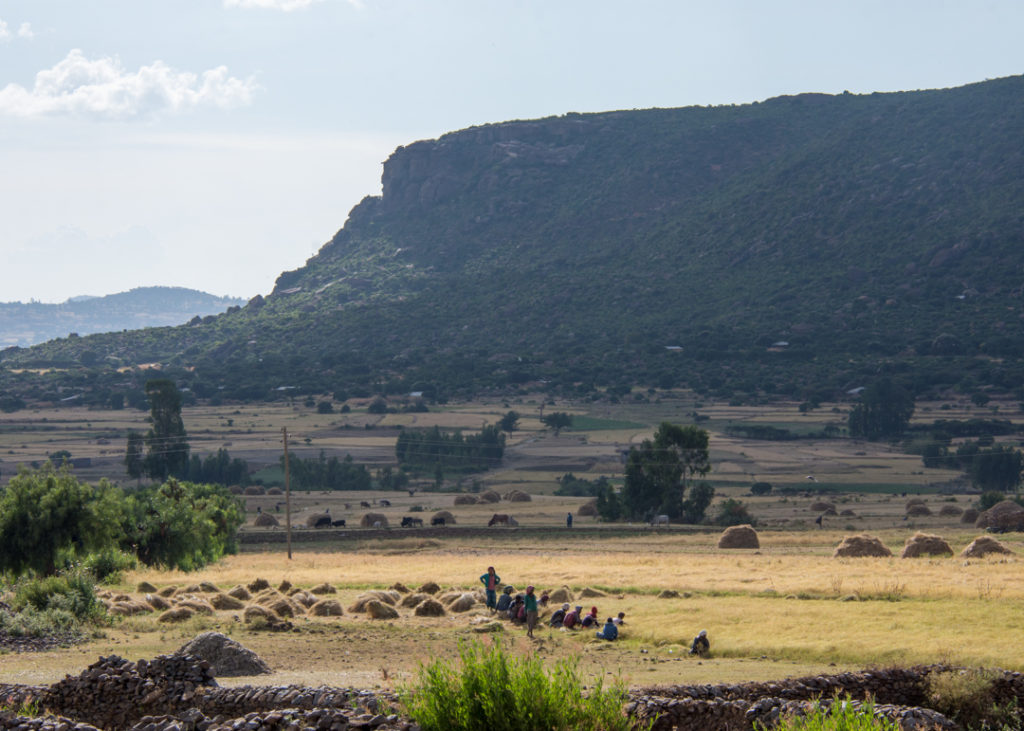
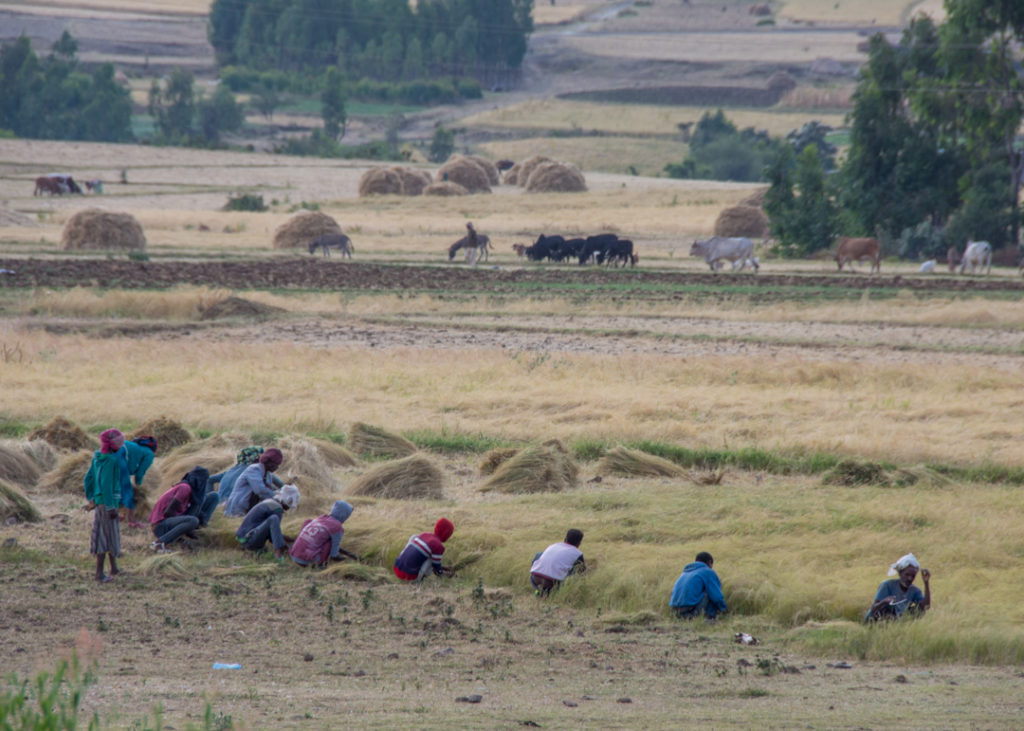
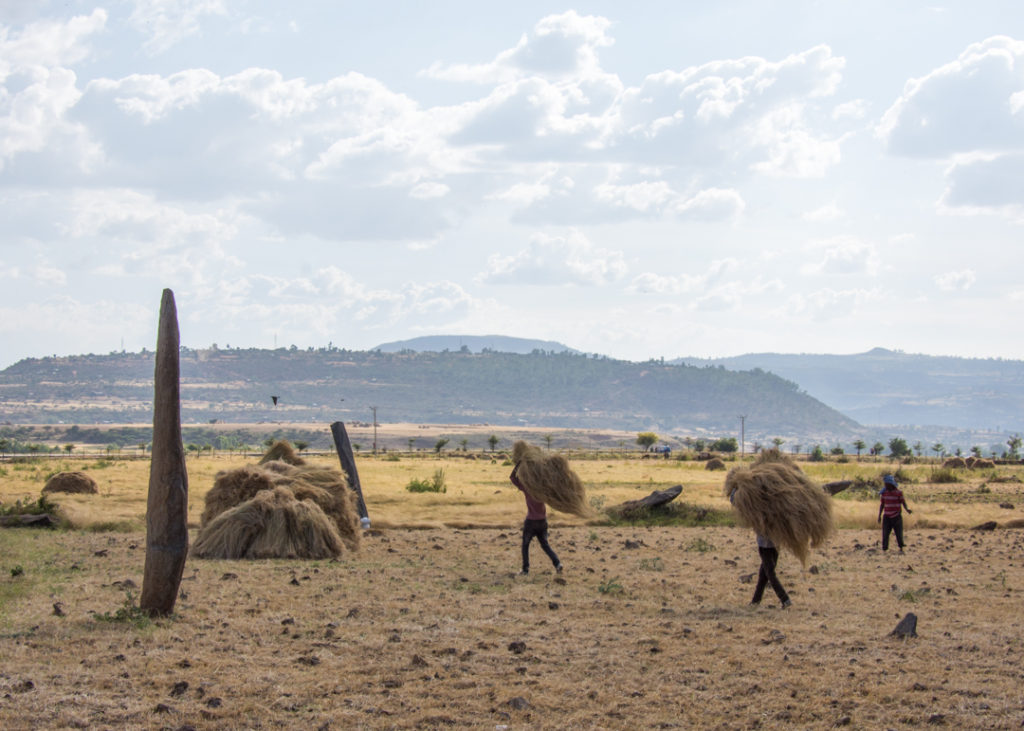
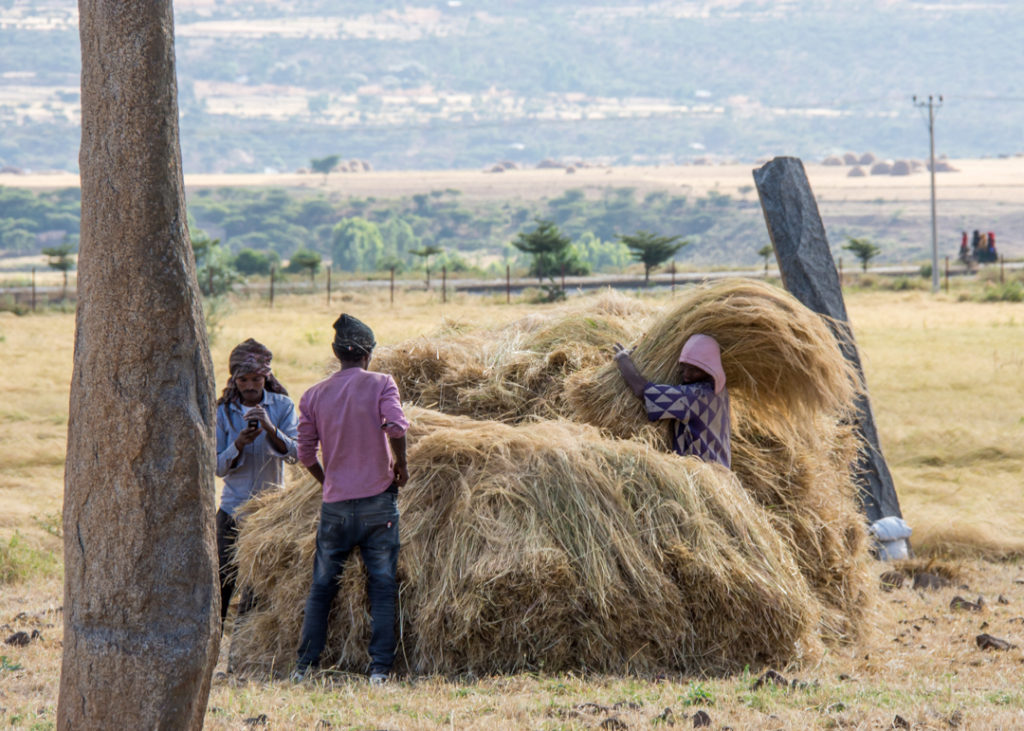
Young children are looking after the cattle while their parents are in the field.
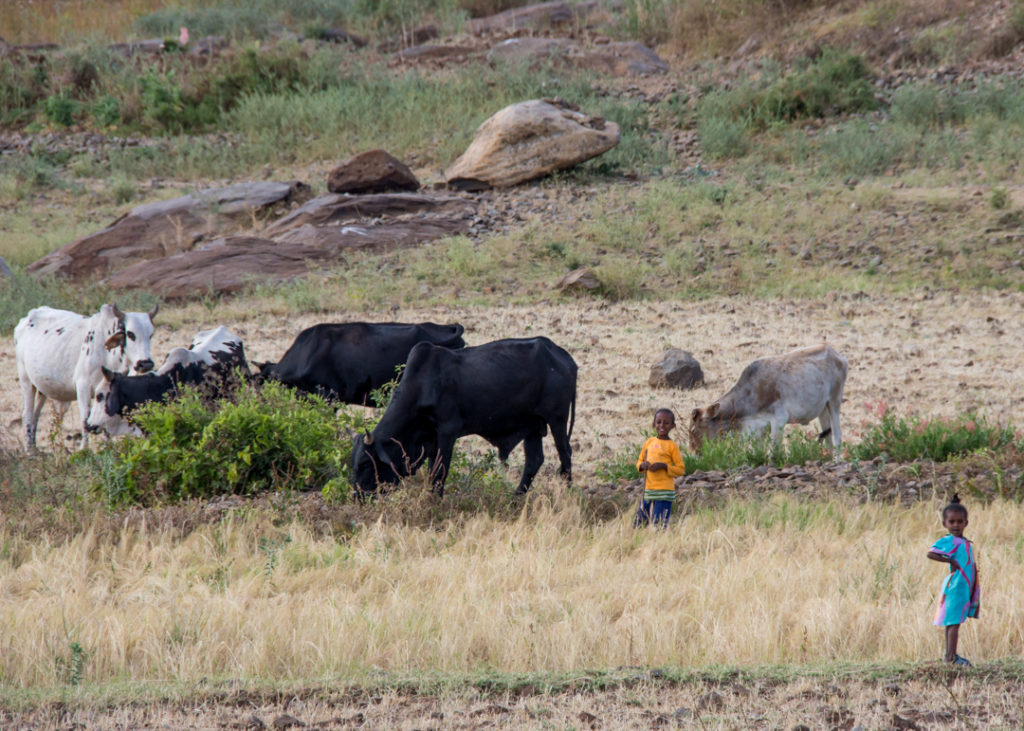
Back in town, we continue our legends exploration with a quick stop at the Queen of Sheba’s Pool. The reservoir probably wasn’t where the queen went to bathe but it does have a nice ring to it. Today it is used for major celebrations.
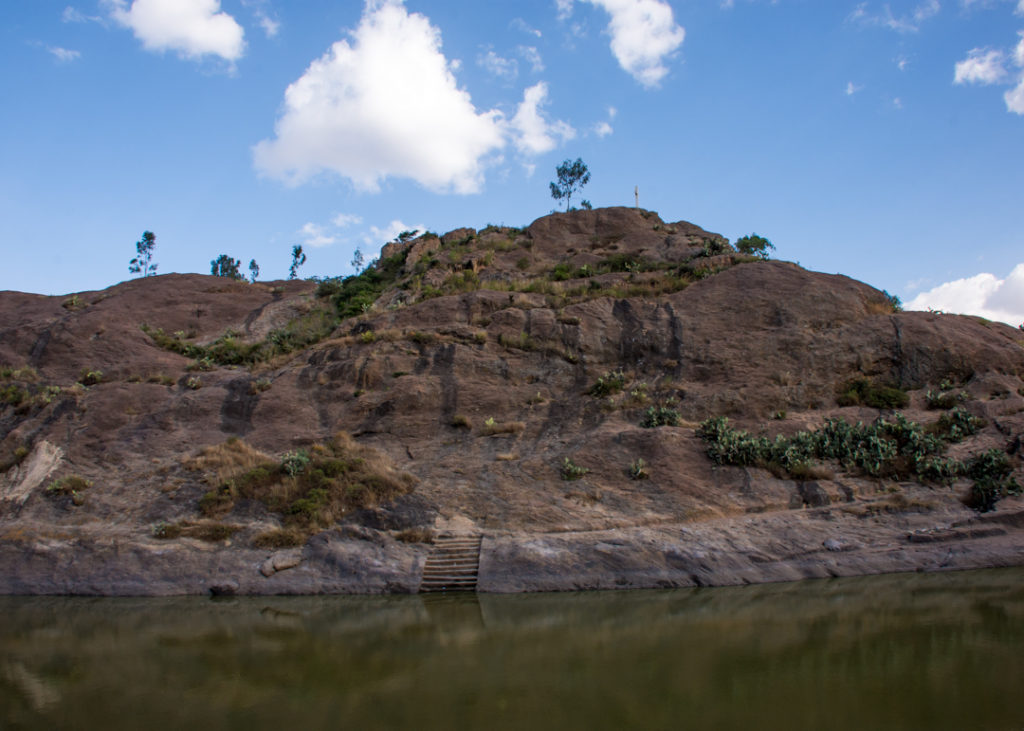
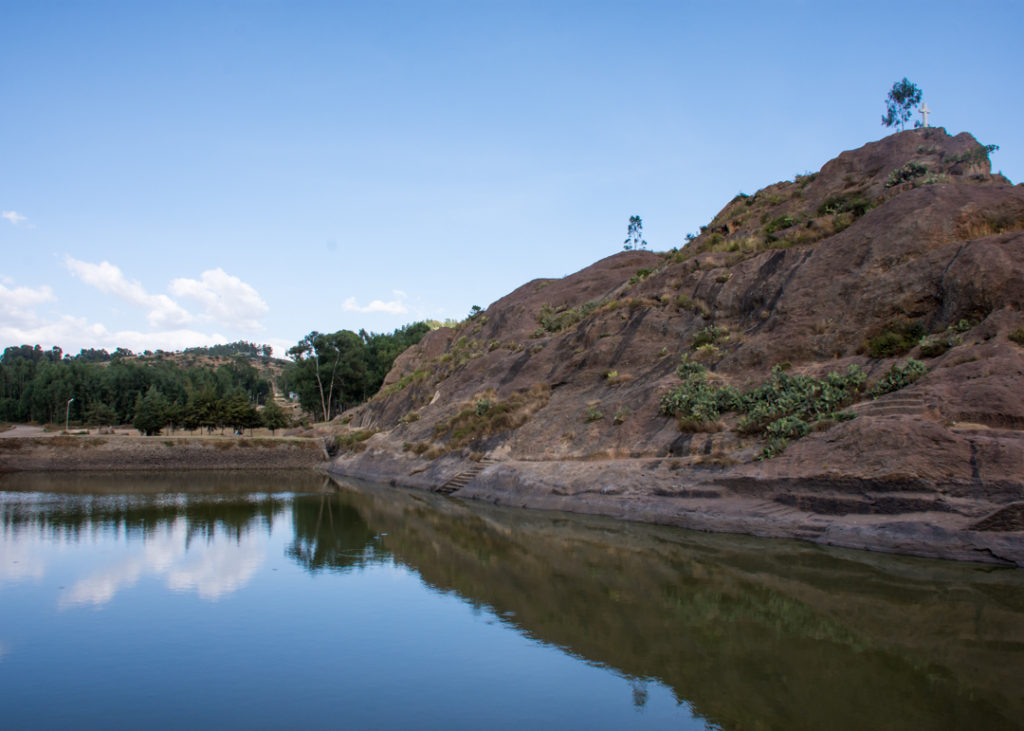
From the pool, an uphill climb soon reveals some more pastoral settings and gorgeous views.
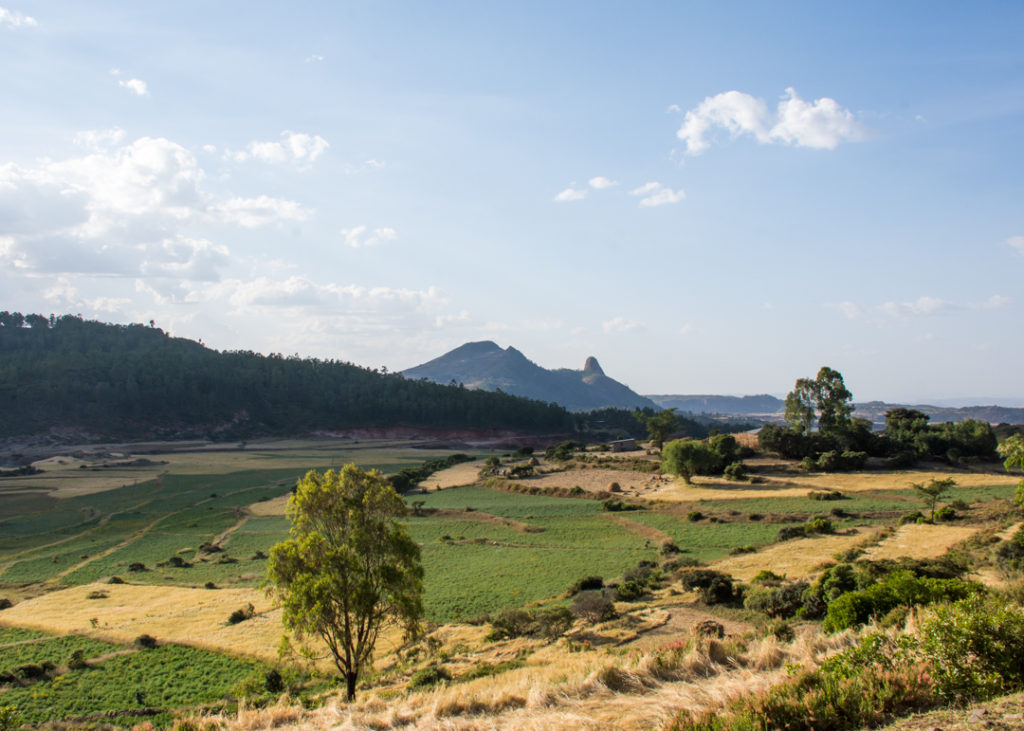
The beauty of traveling when it’s harvest season is unparalleled. Come back in a few months and all would be dried and brown.
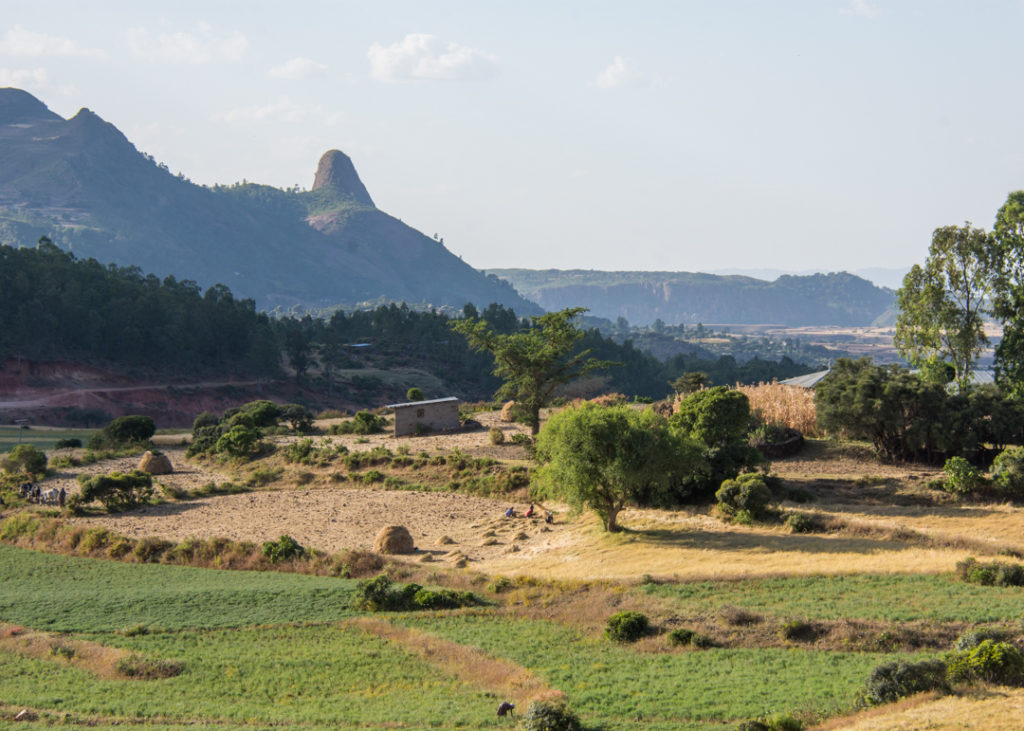
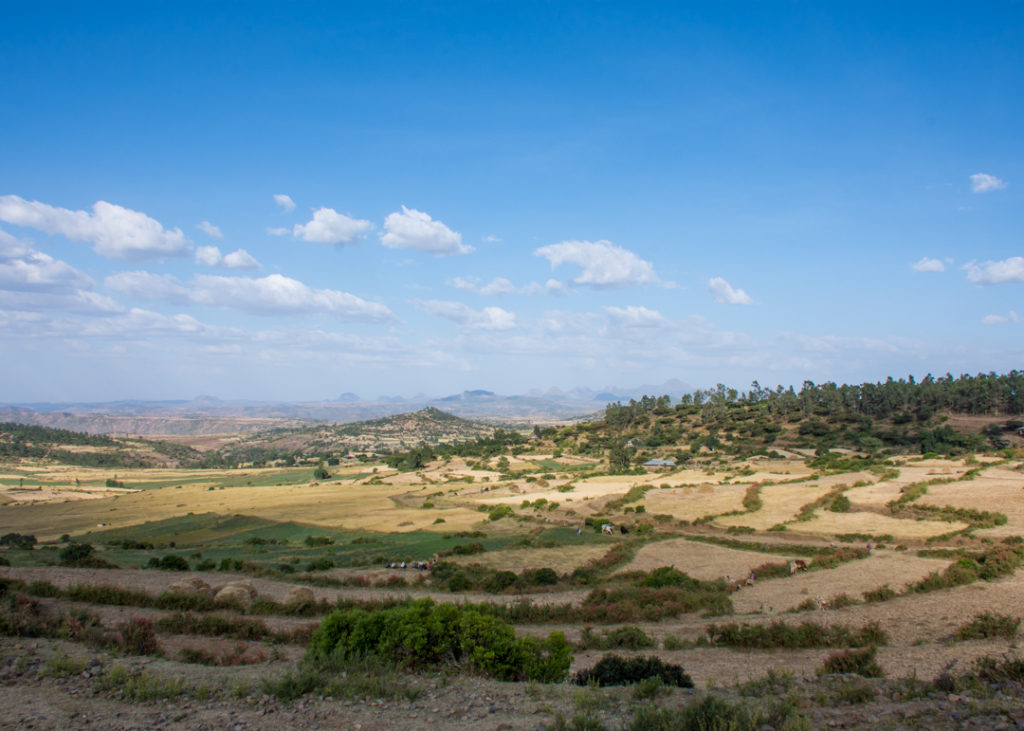
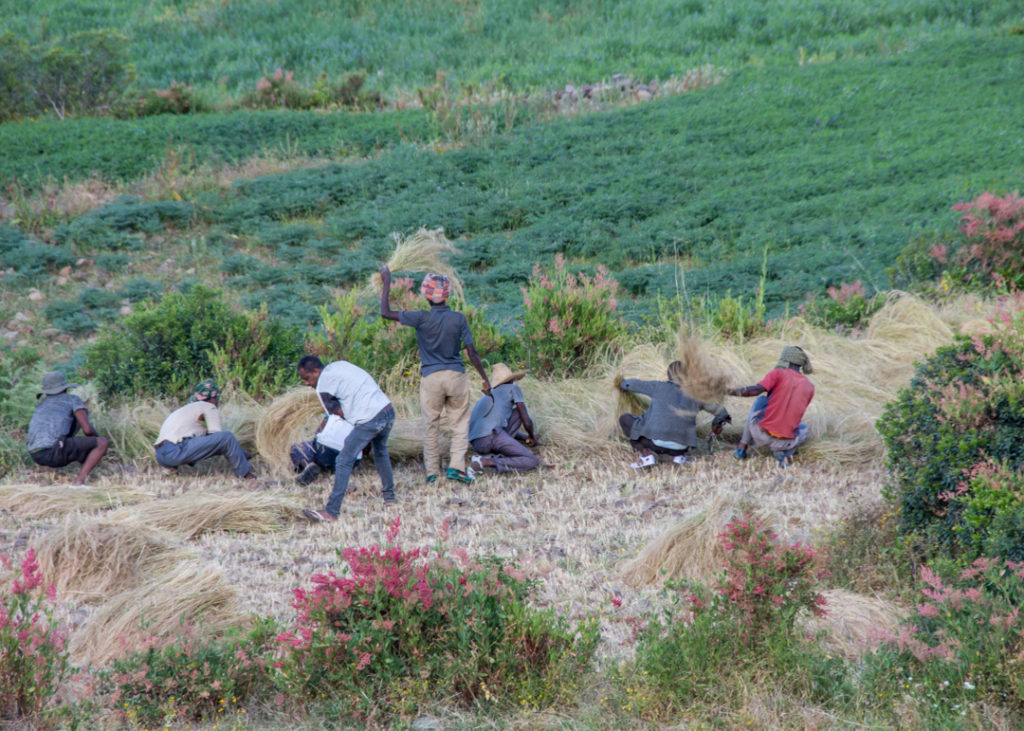
The scenery was nice enough for an emperor’s palace to be built here, although only his and his son’s tombs can still be seen these days. Going down into Kaleb and Gebre Meskel’s tombs feels very much like an Indiana Jones quest with light filtering in magical ways…
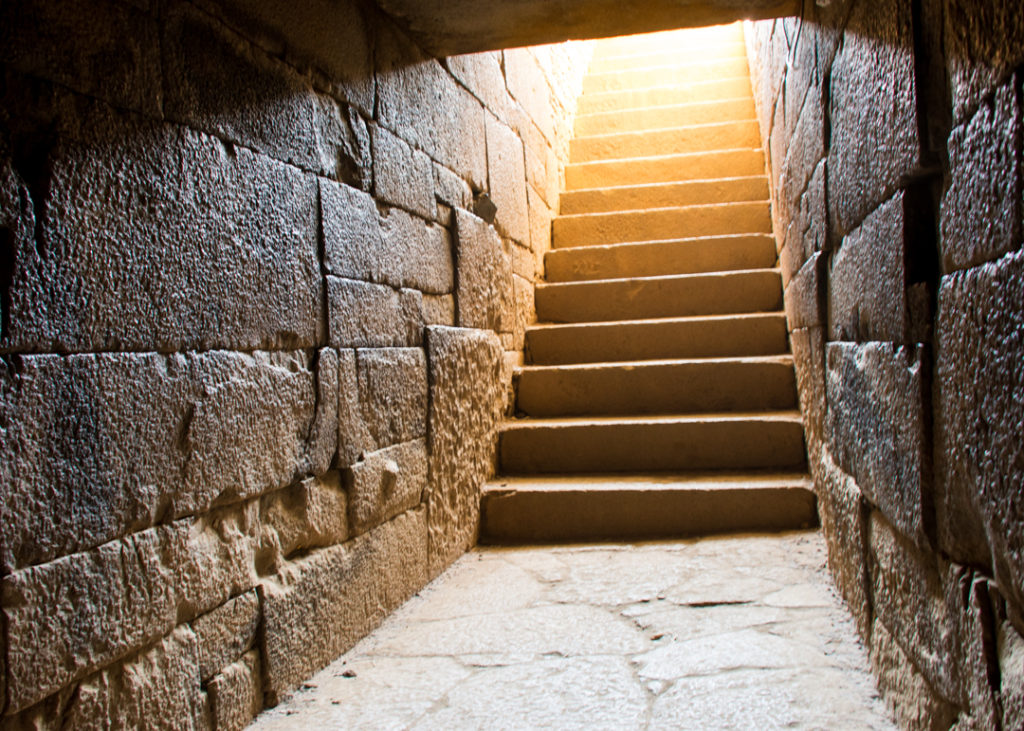
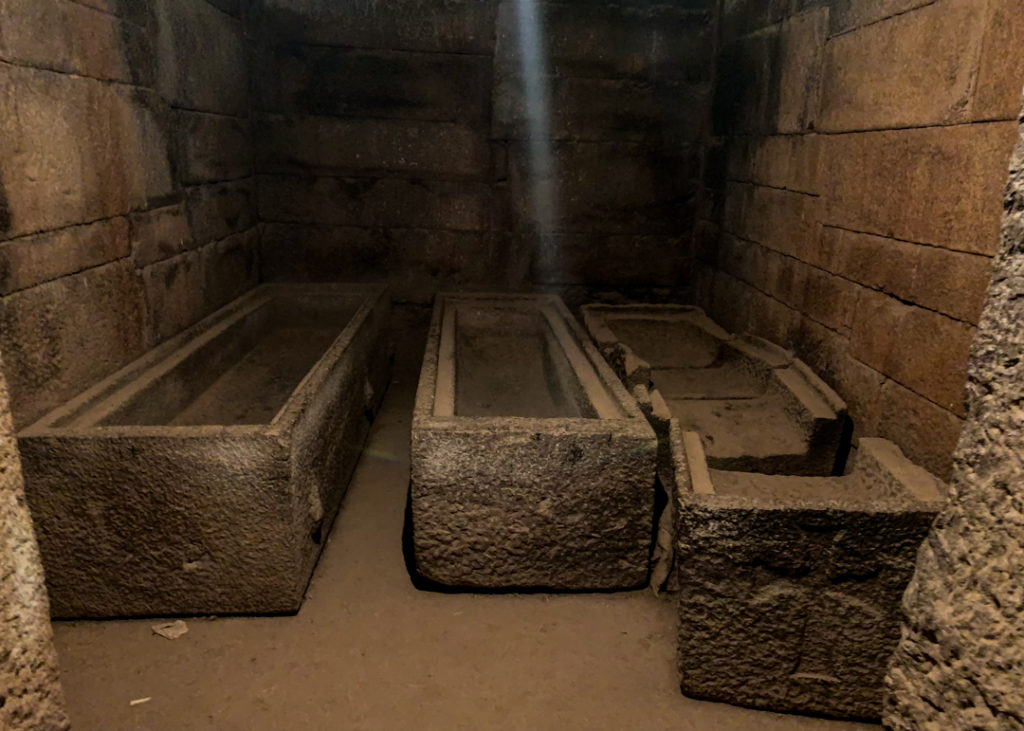
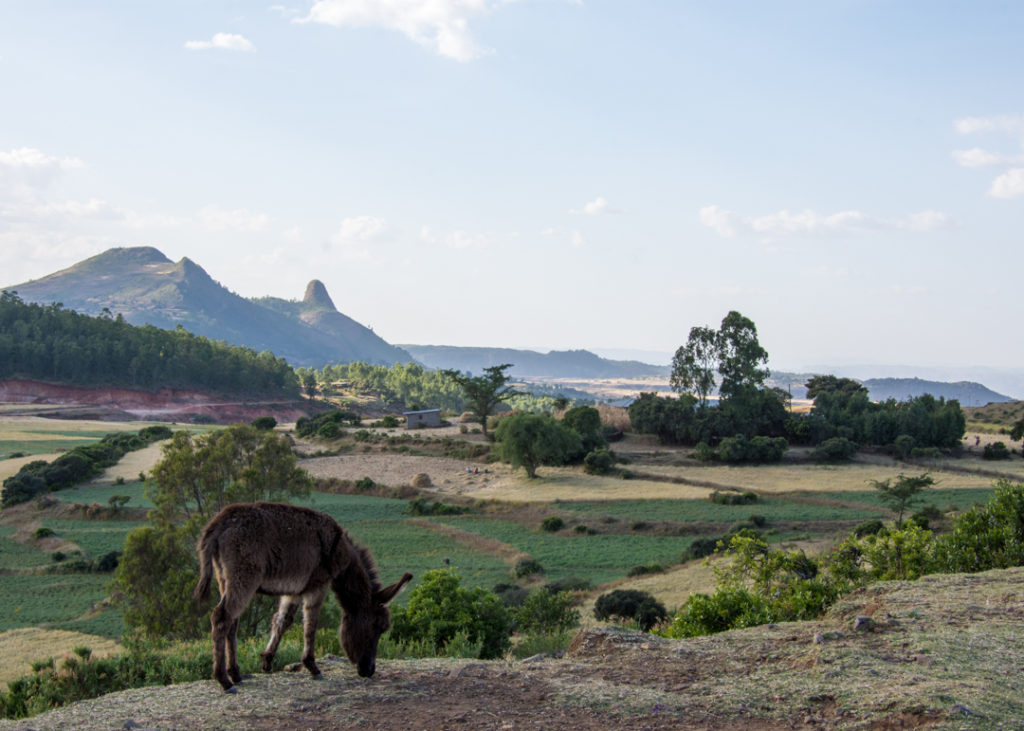
Back in town, the old part had yet to be explored so we set on foot to catch a glimpse of local life in the golden hour.
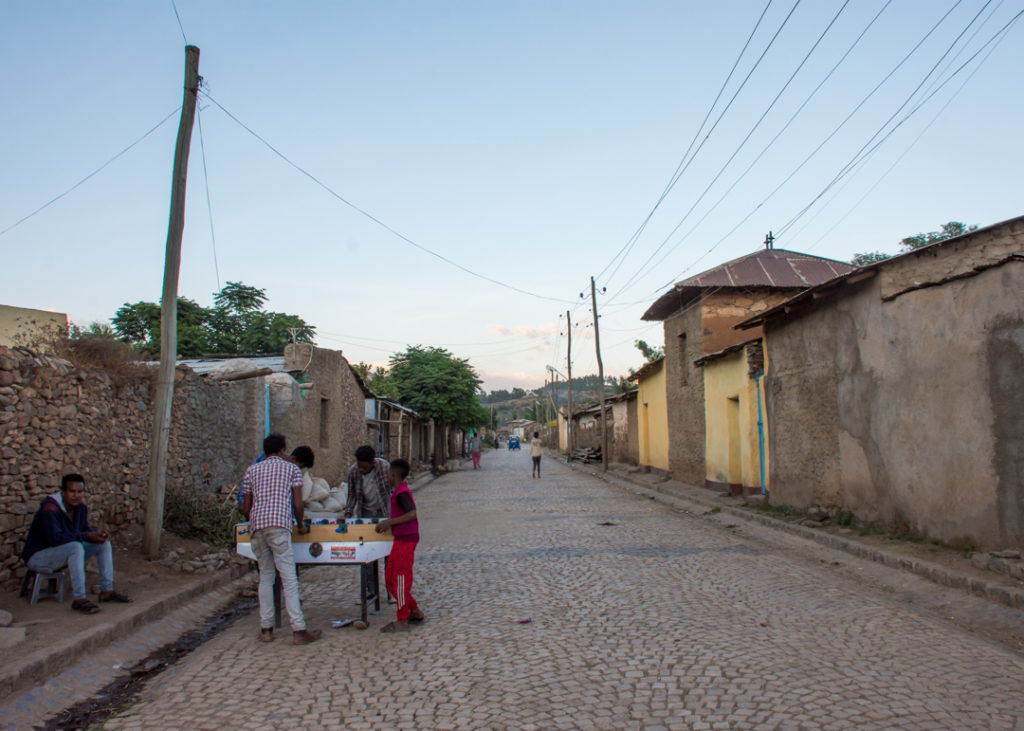
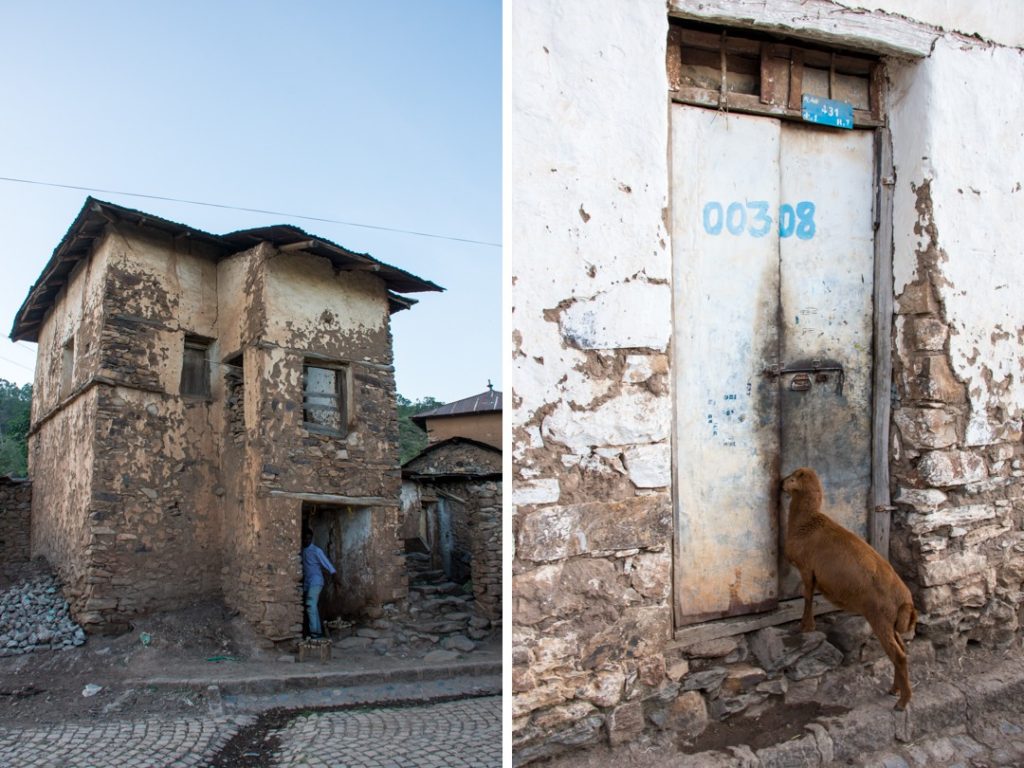
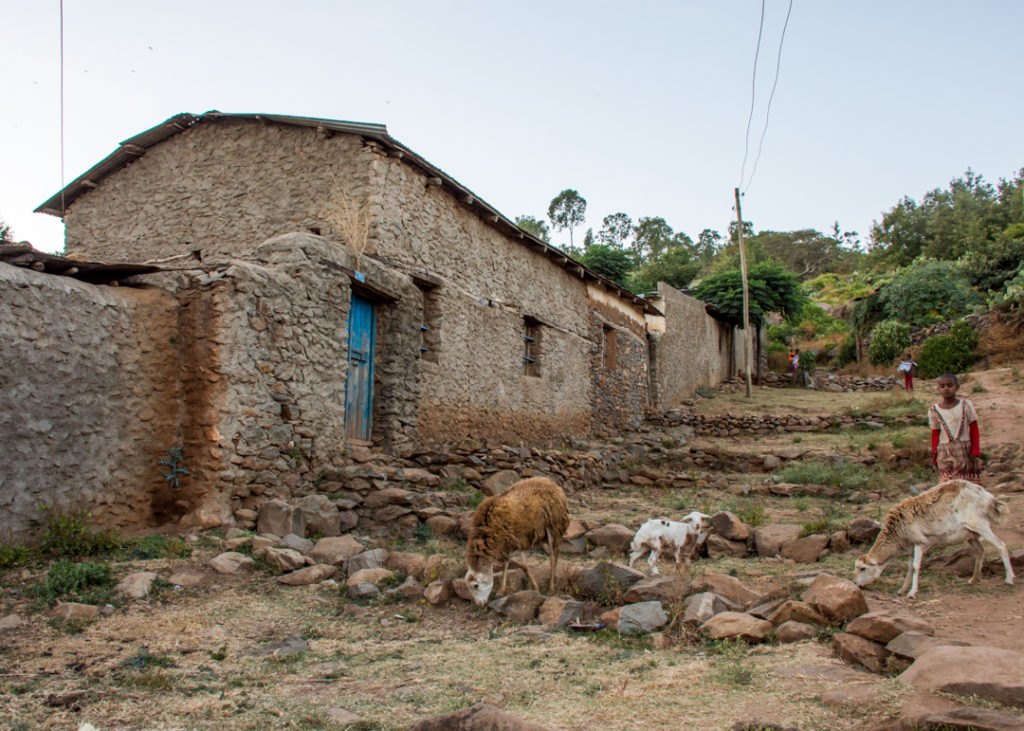
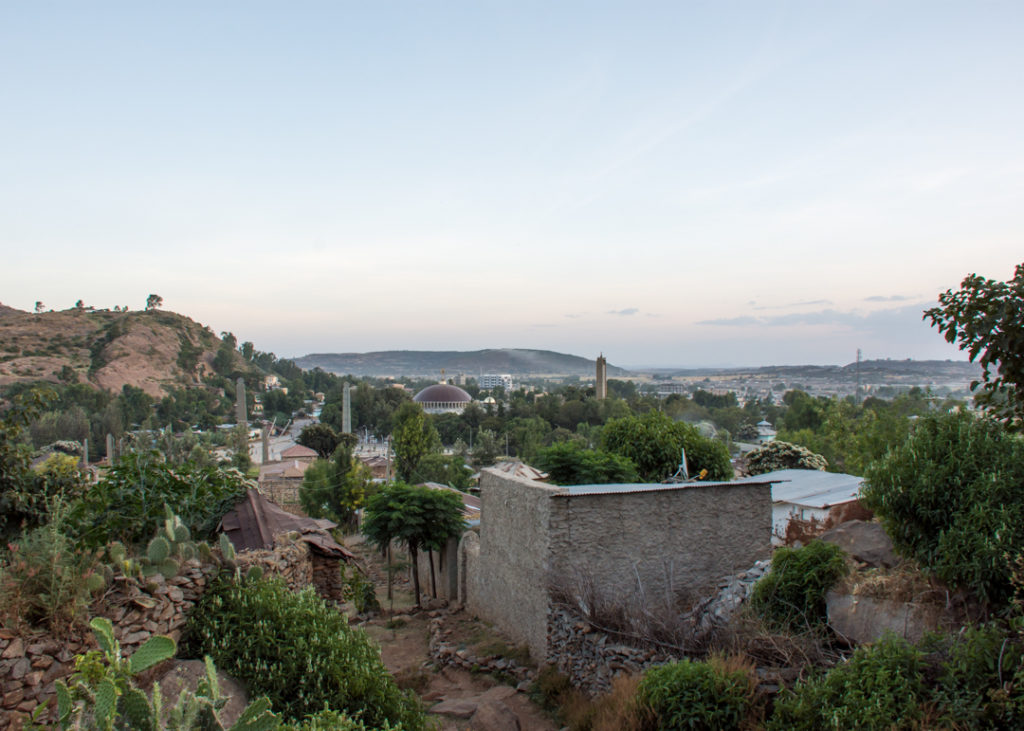
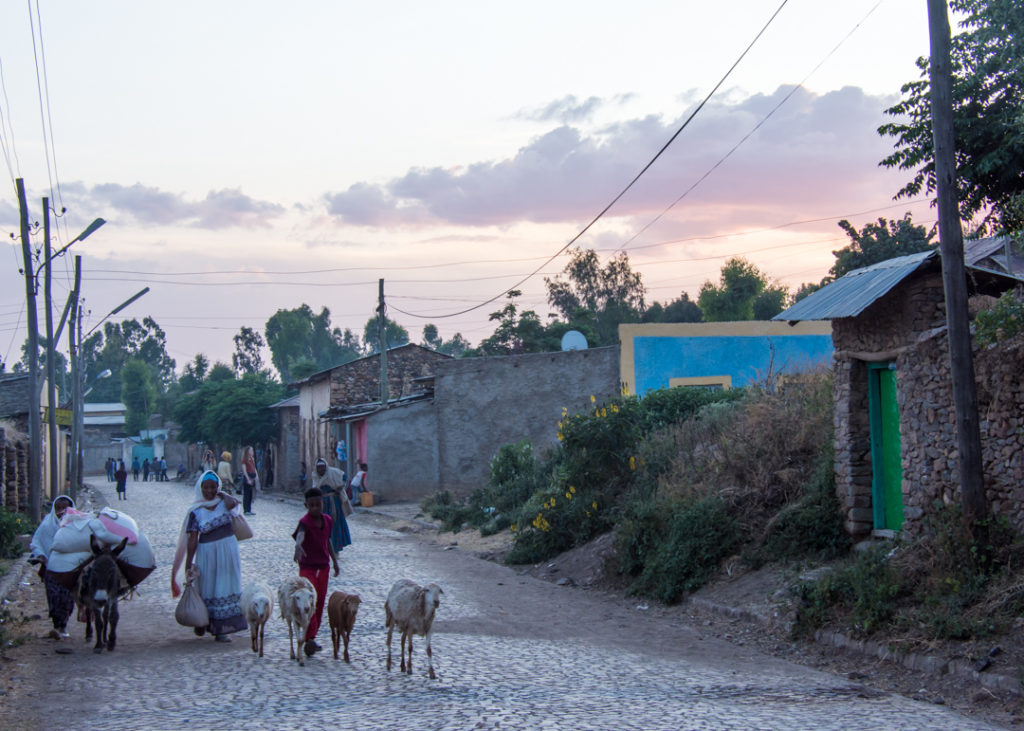
A packed day ending with a filling bowl of Shiro Wat – a thick stew made of powdered chickpeas and spices. Tomorrow, we start going even higher up in the mountains – stay tuned!
